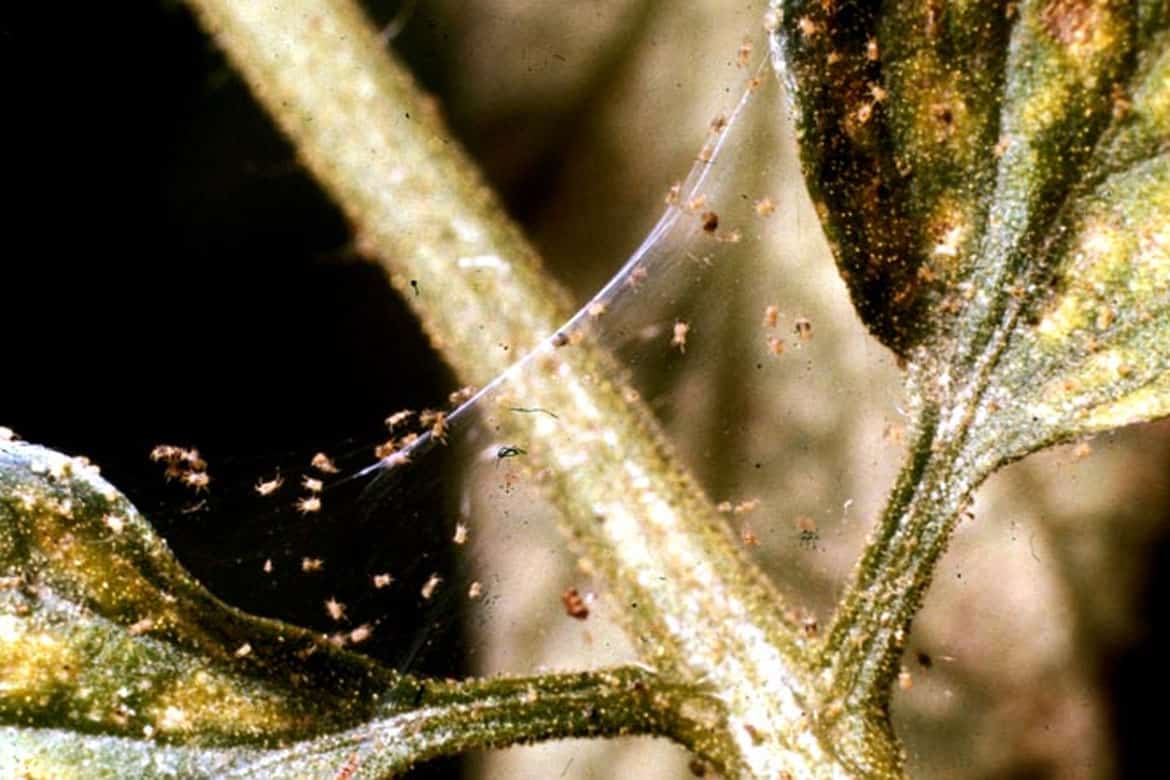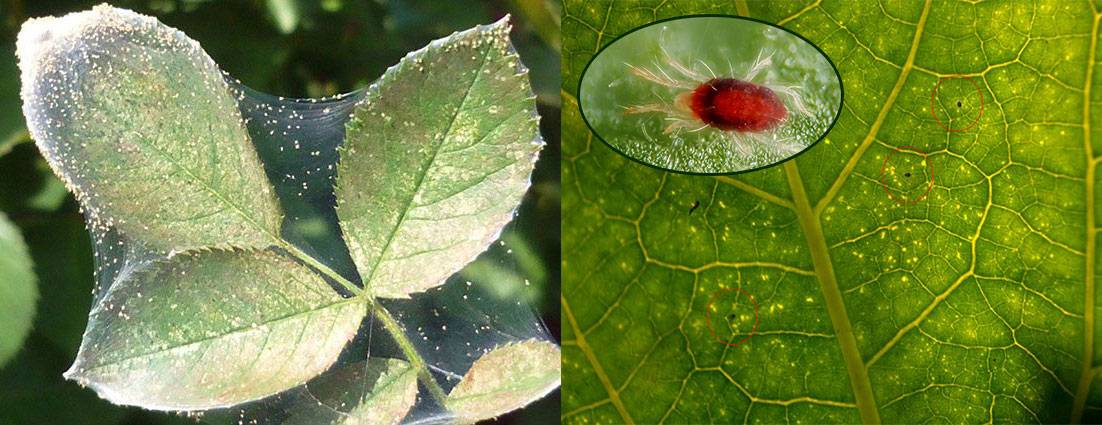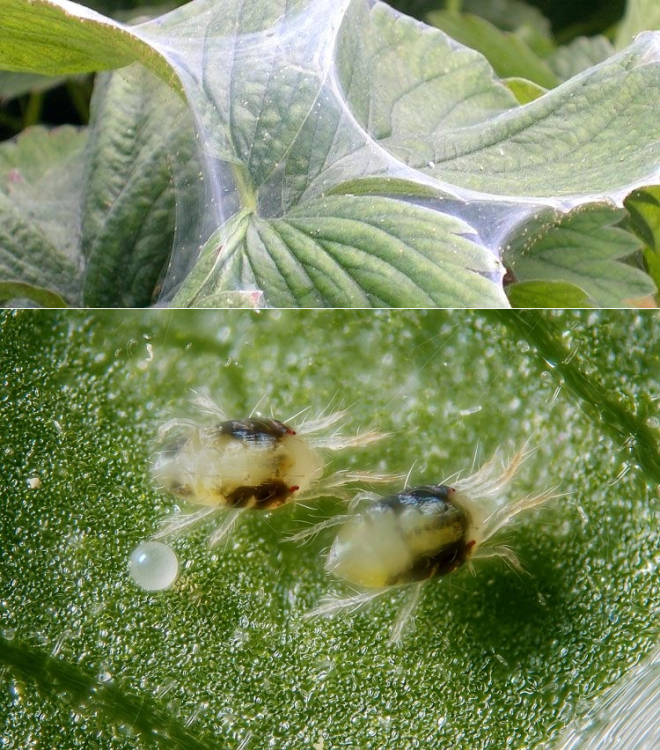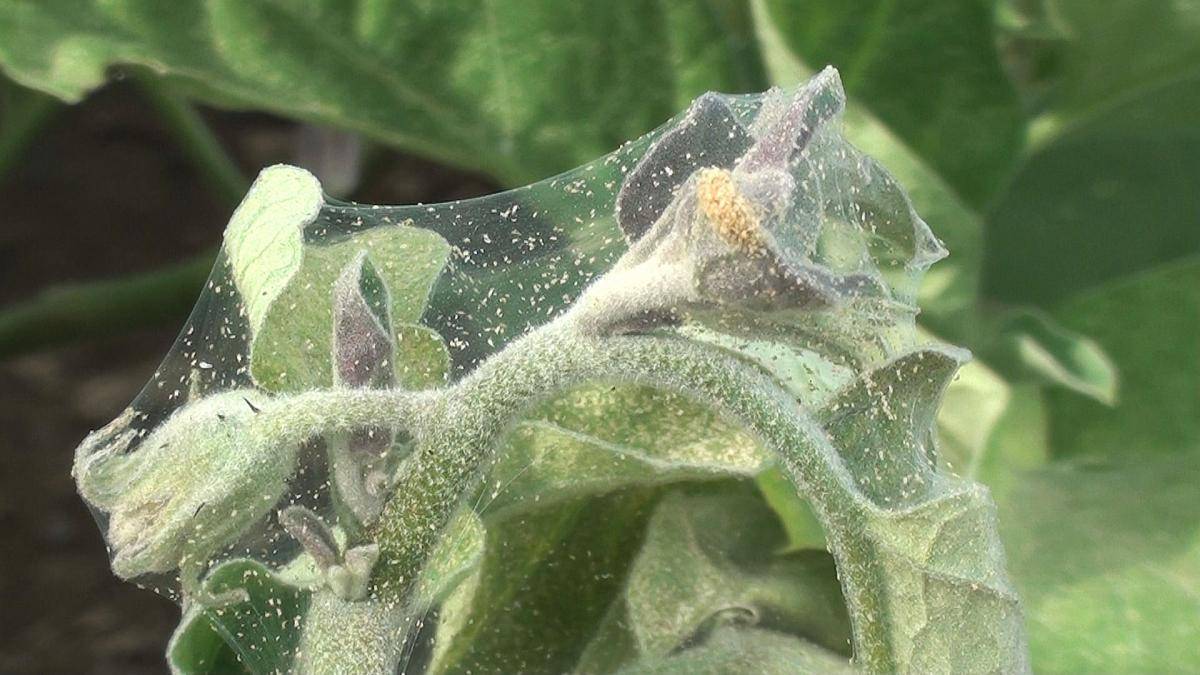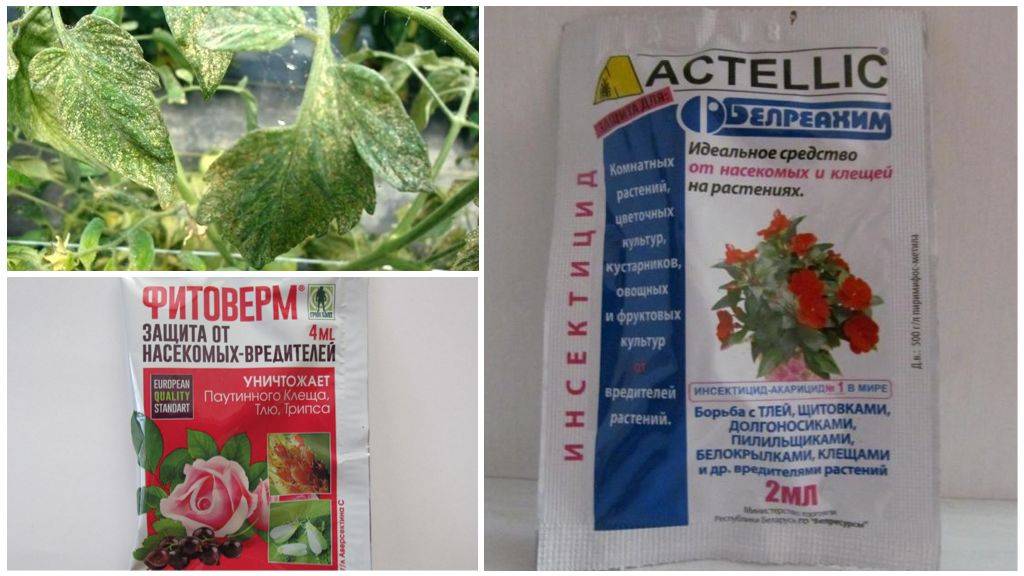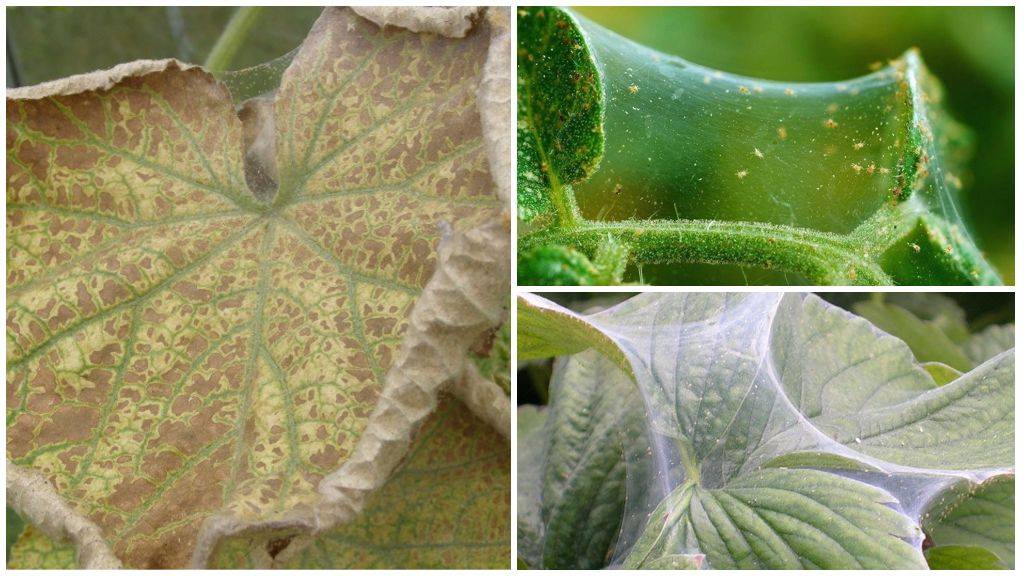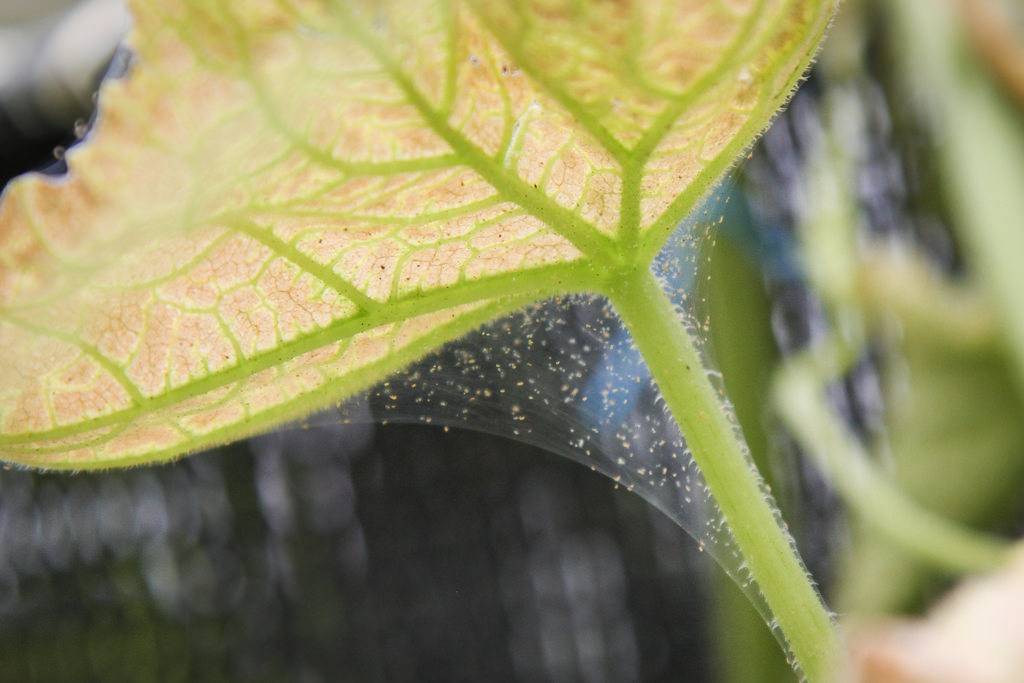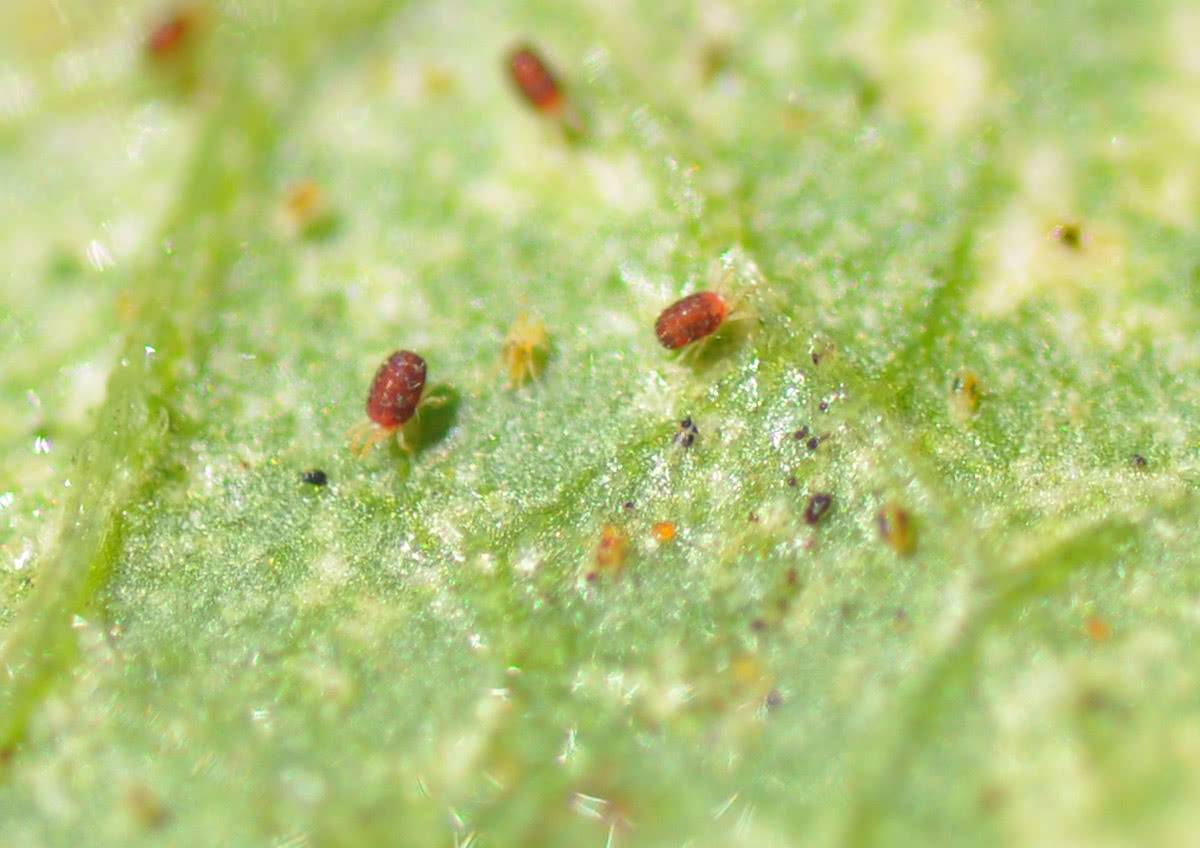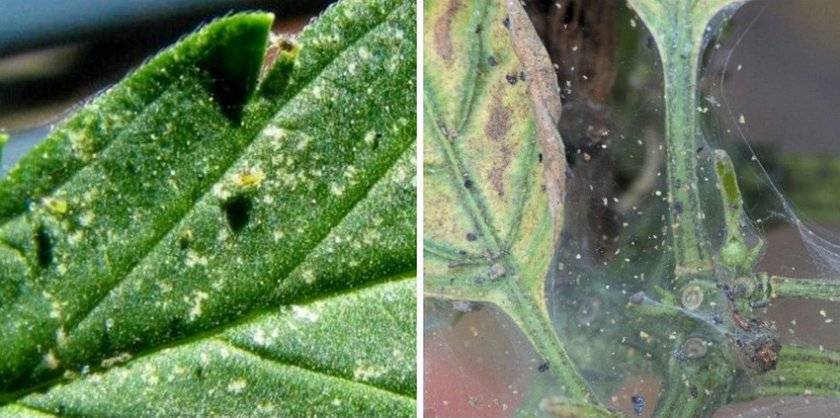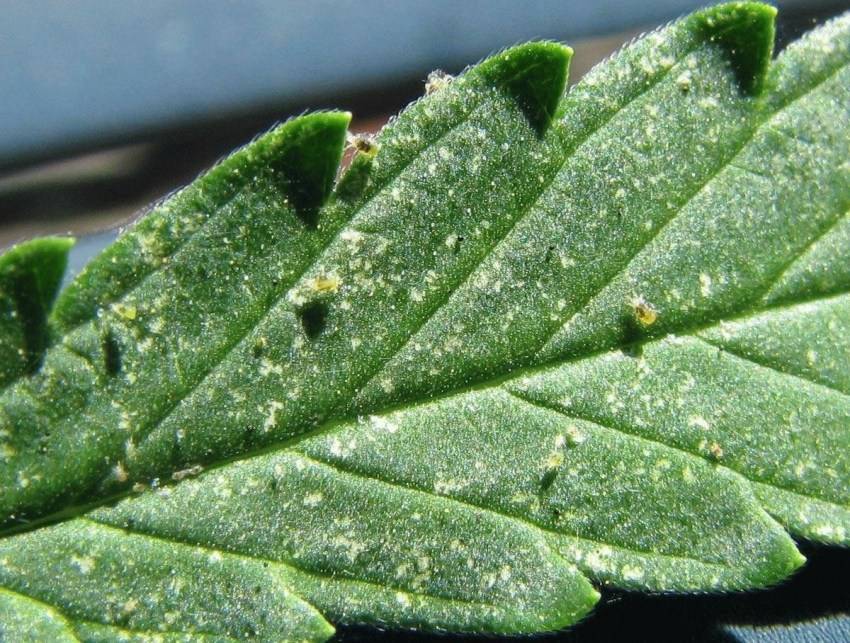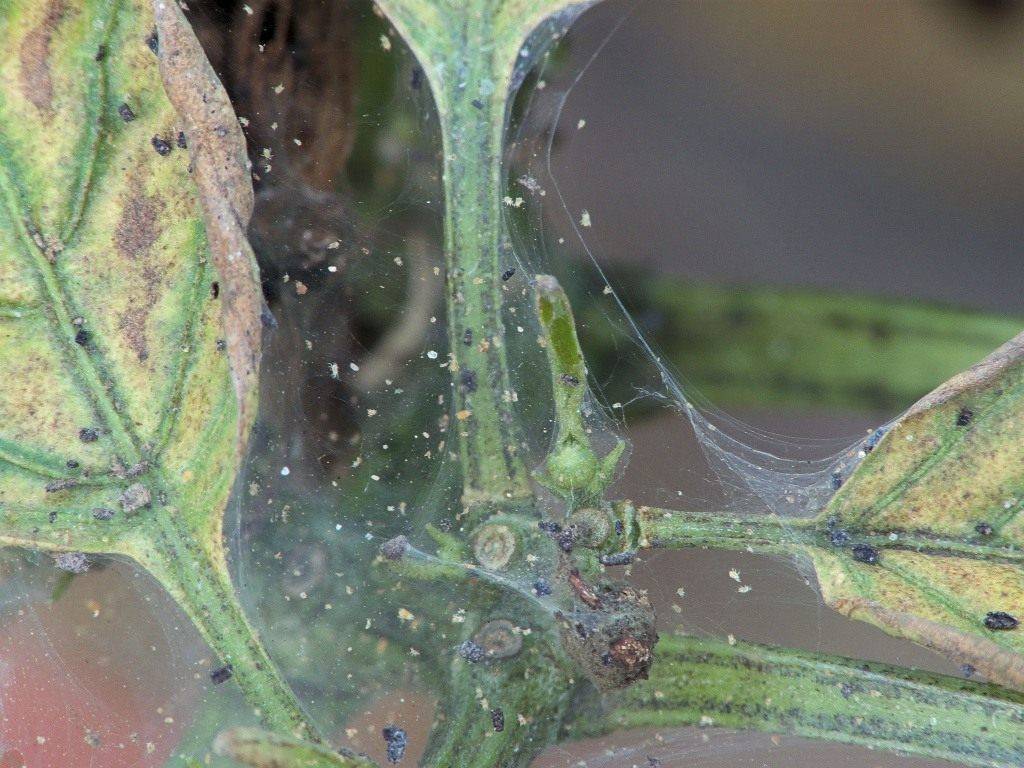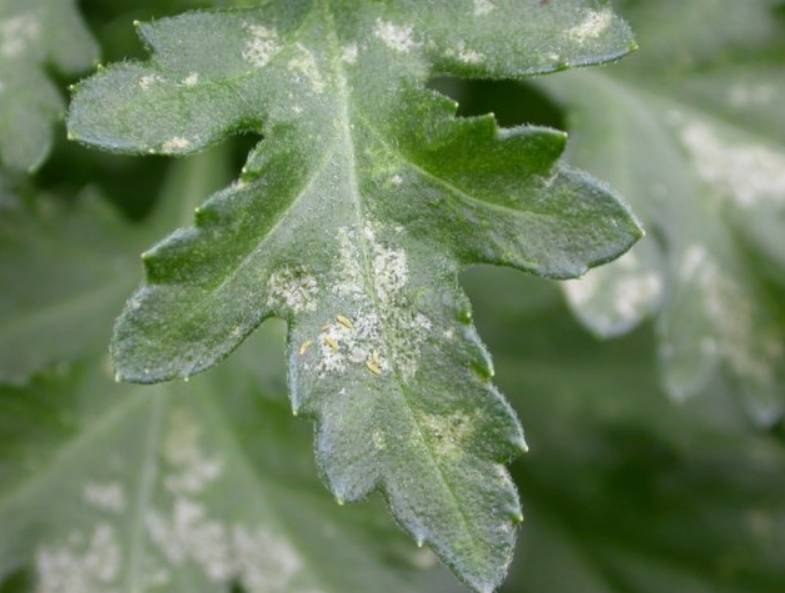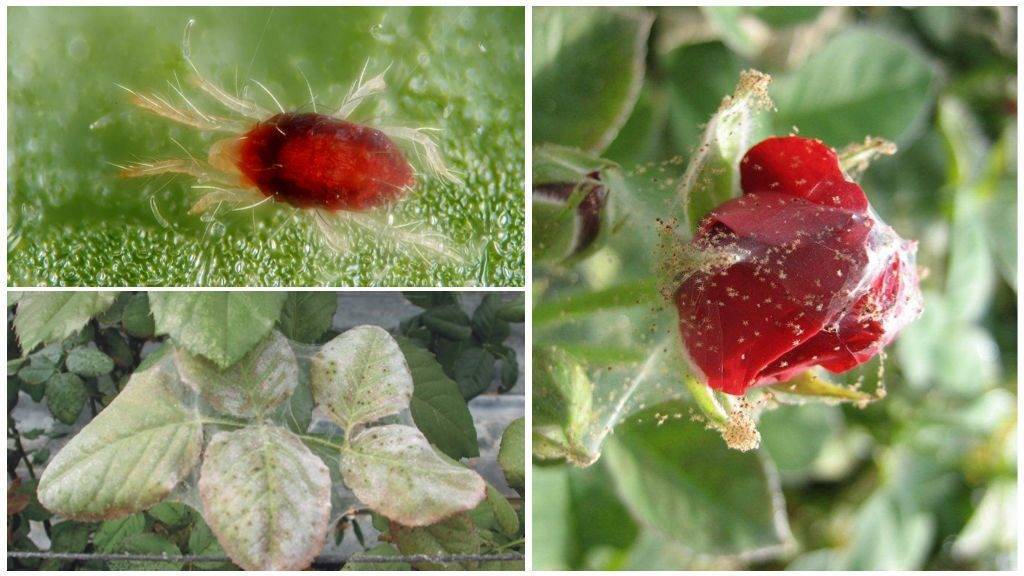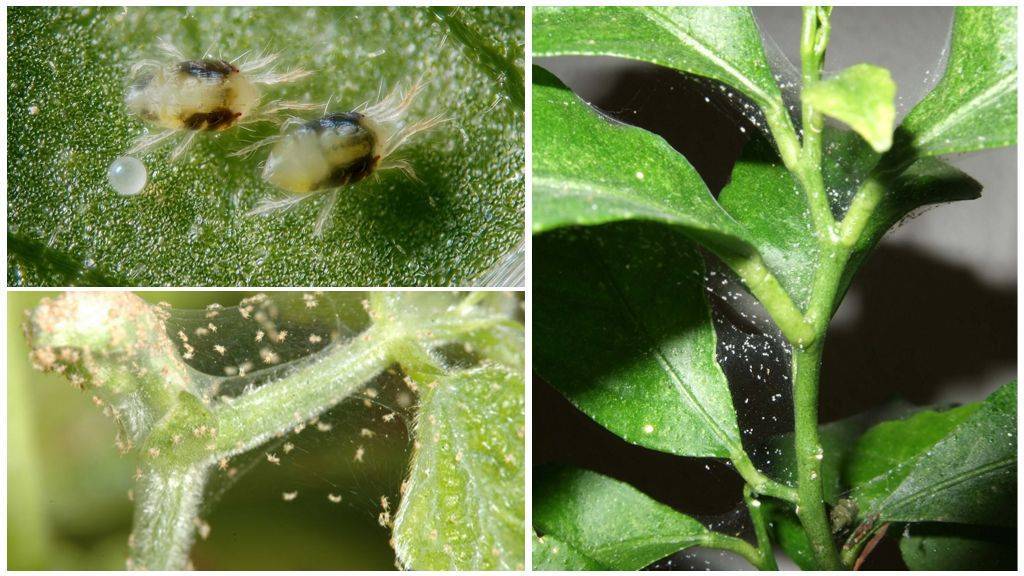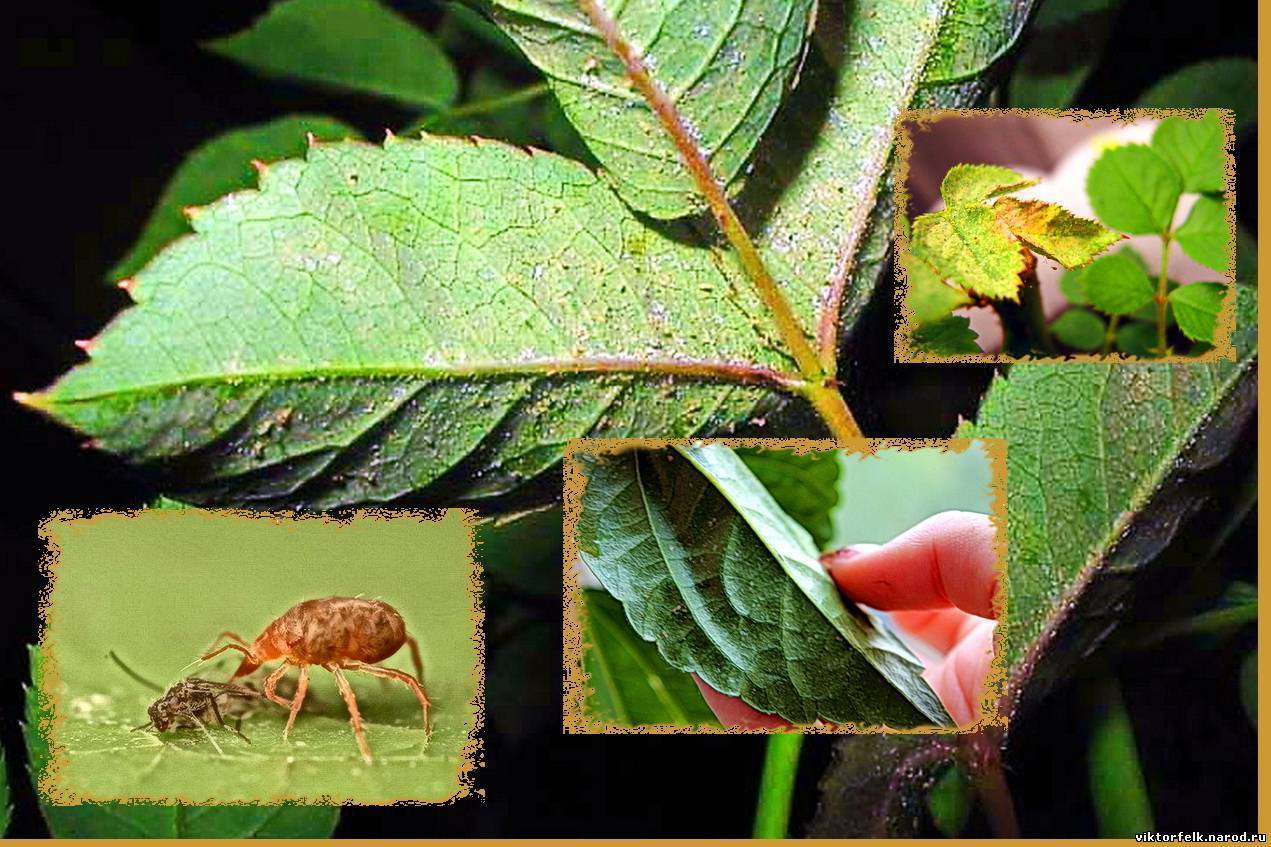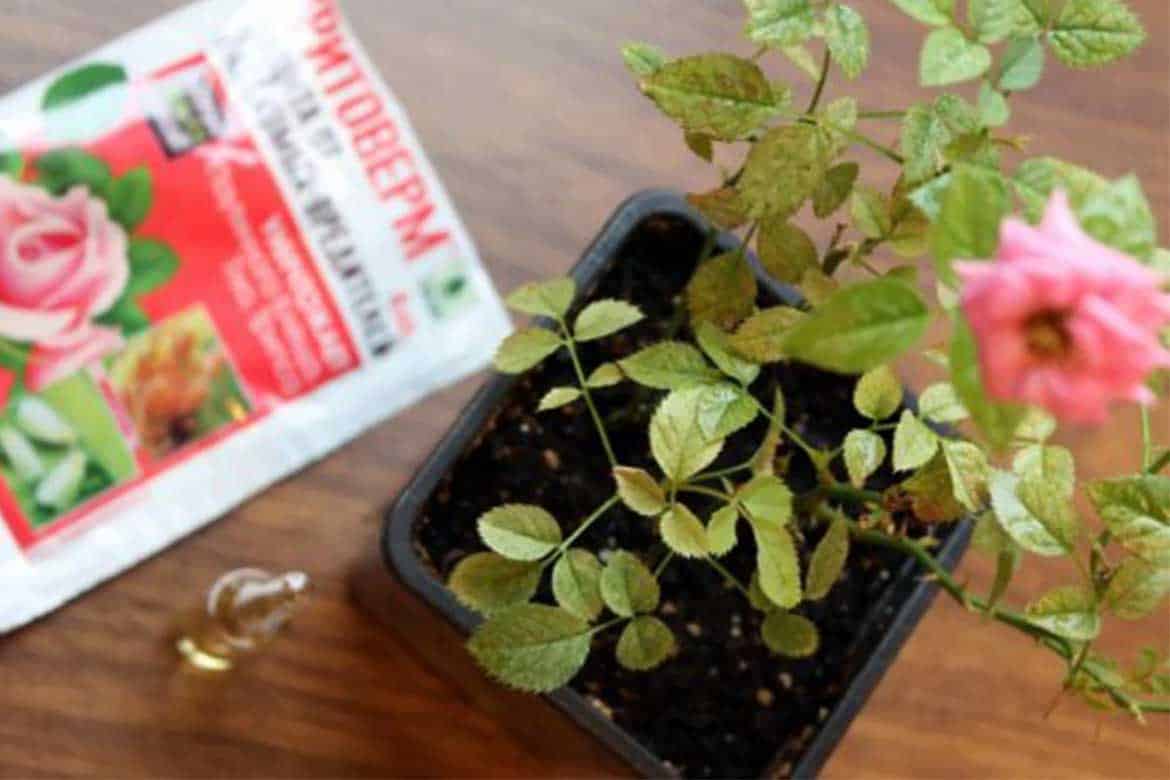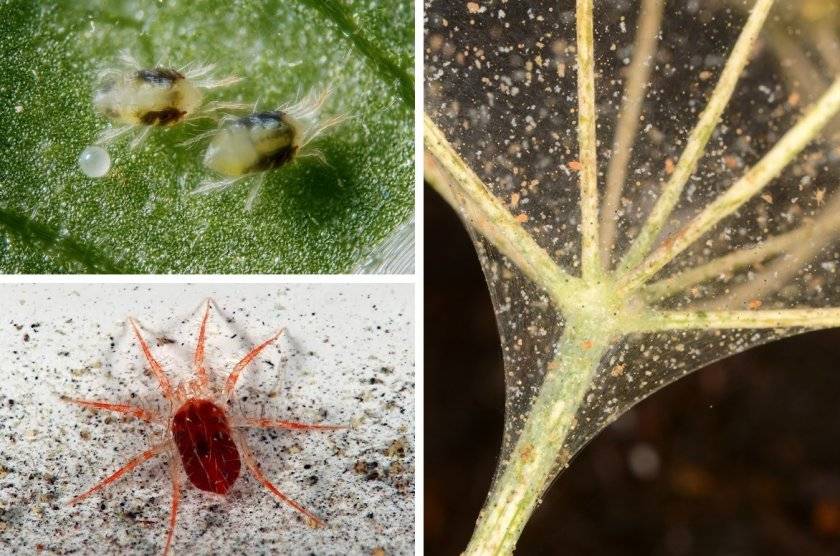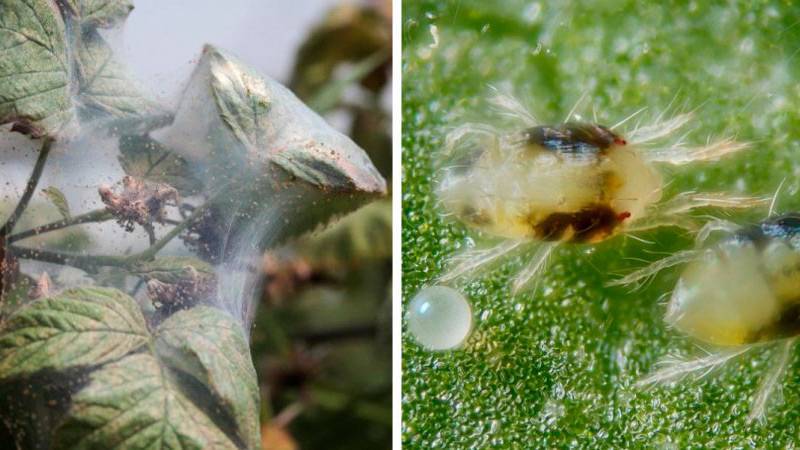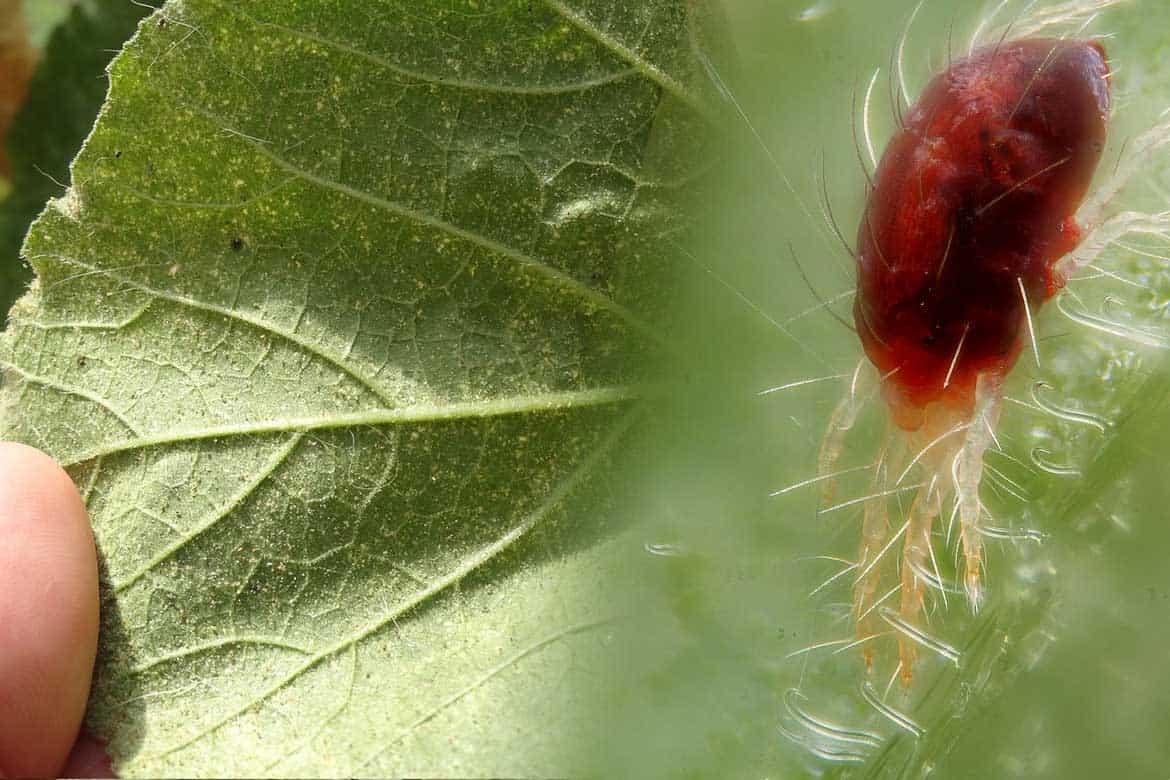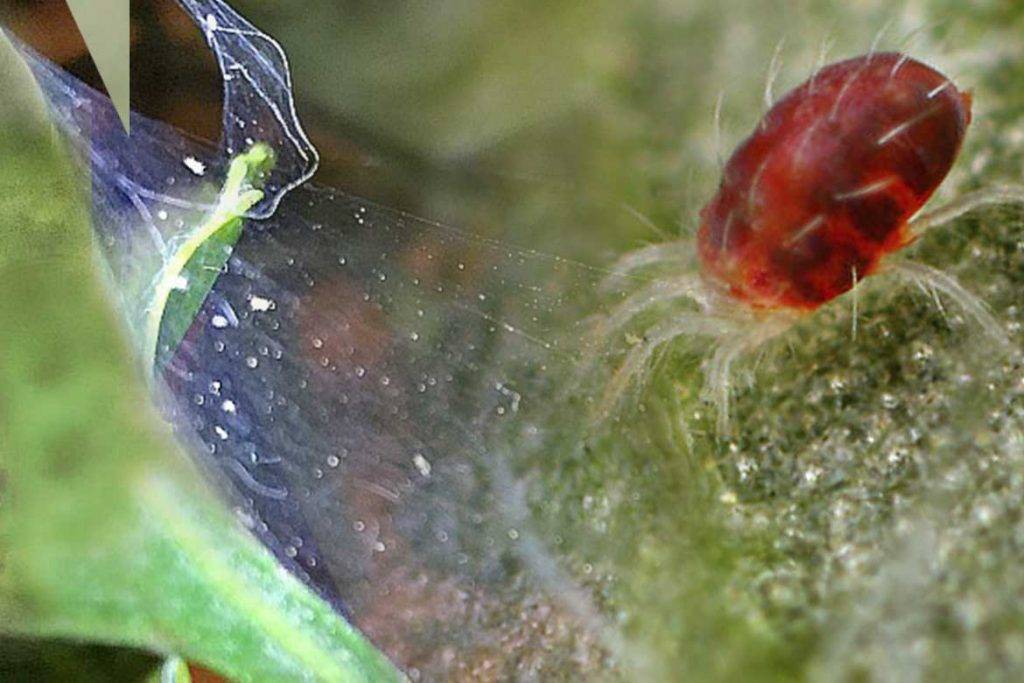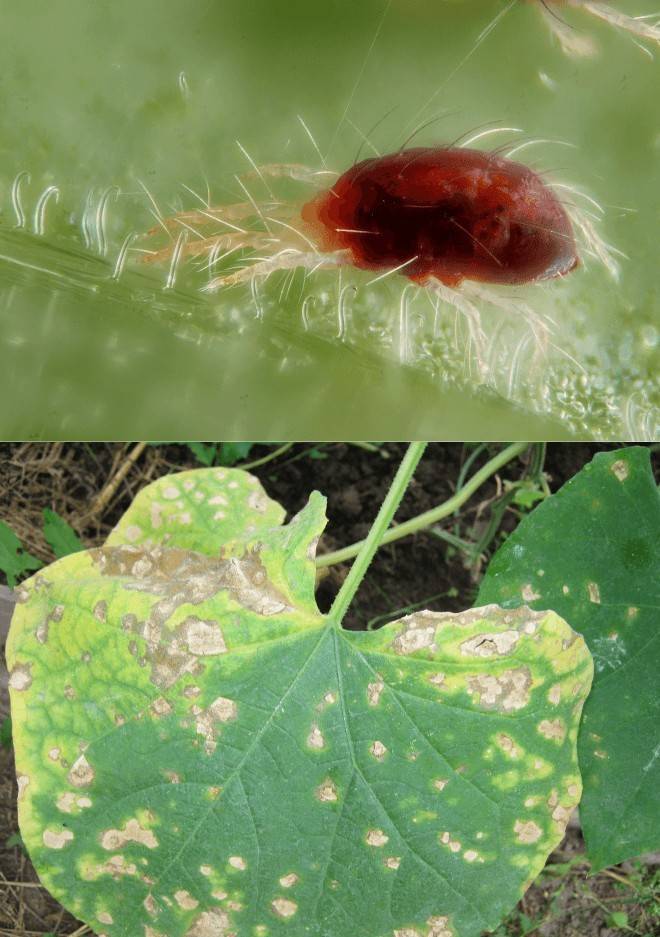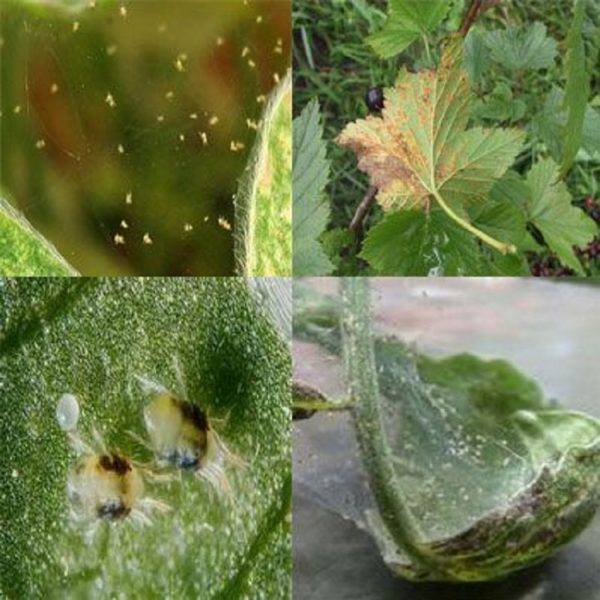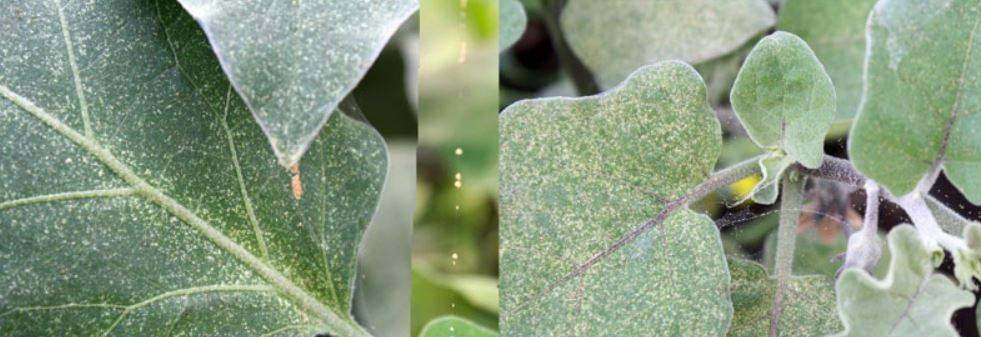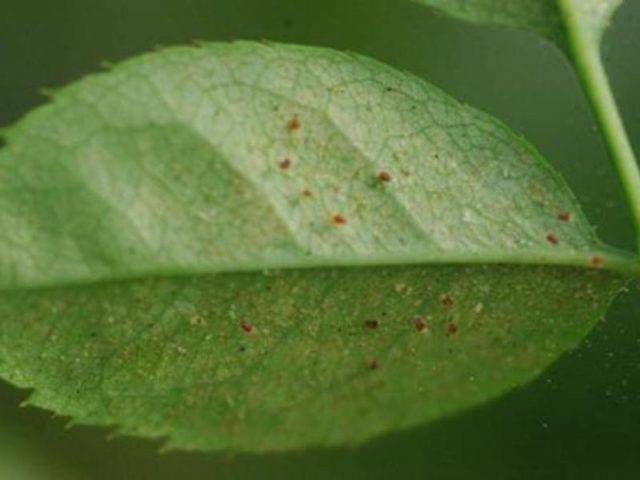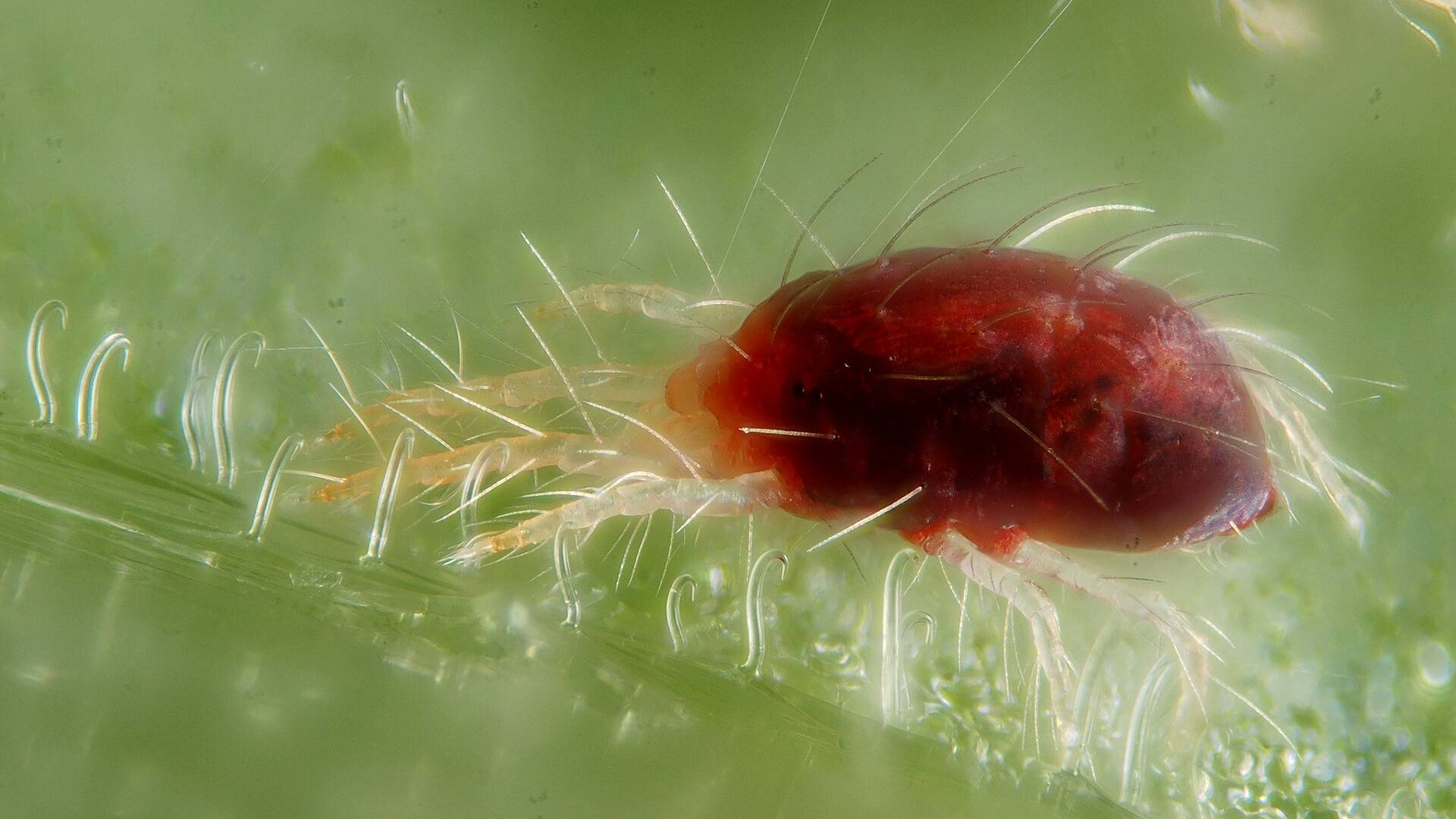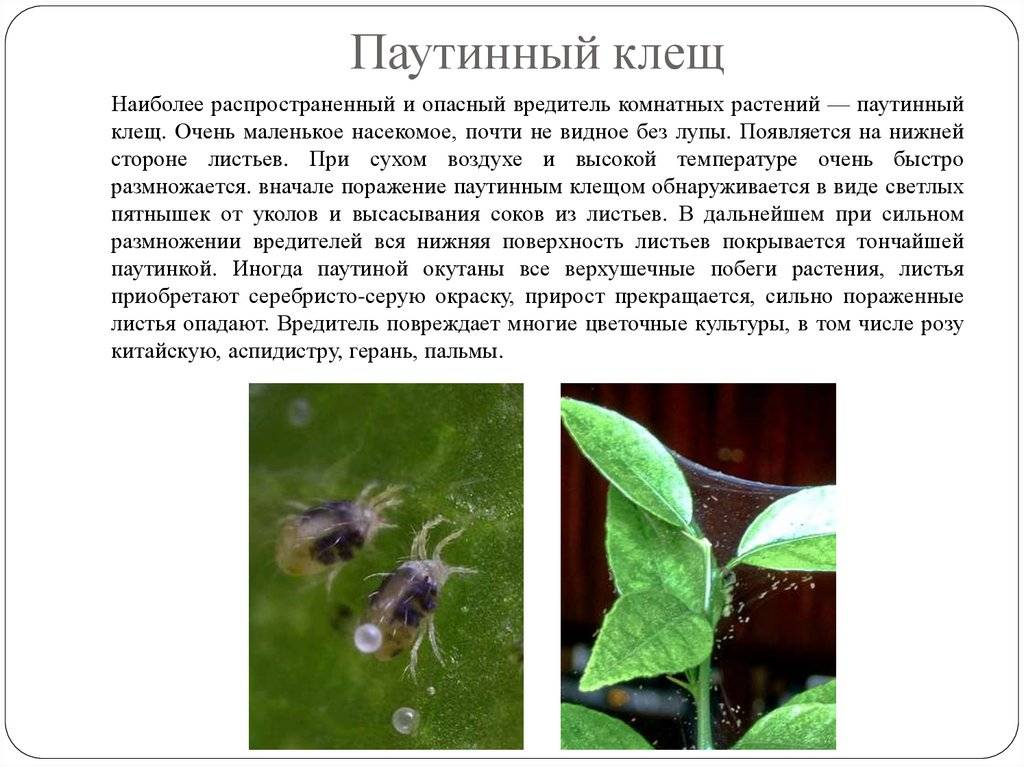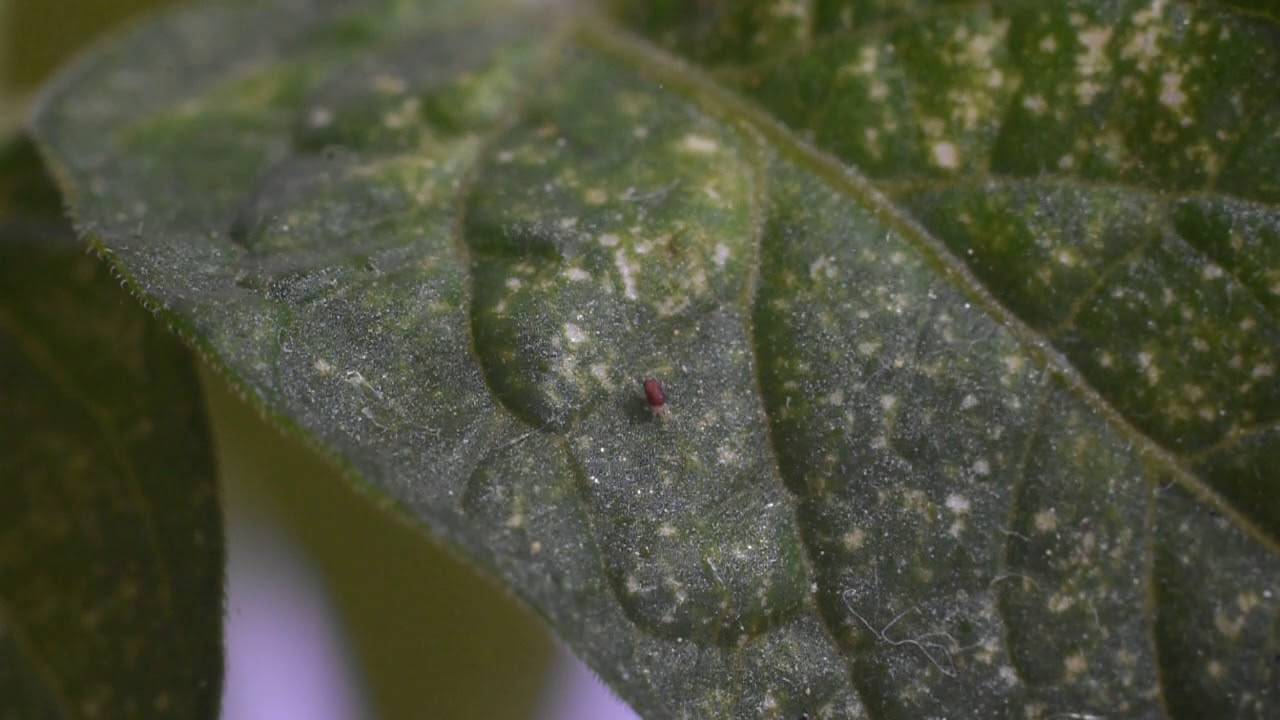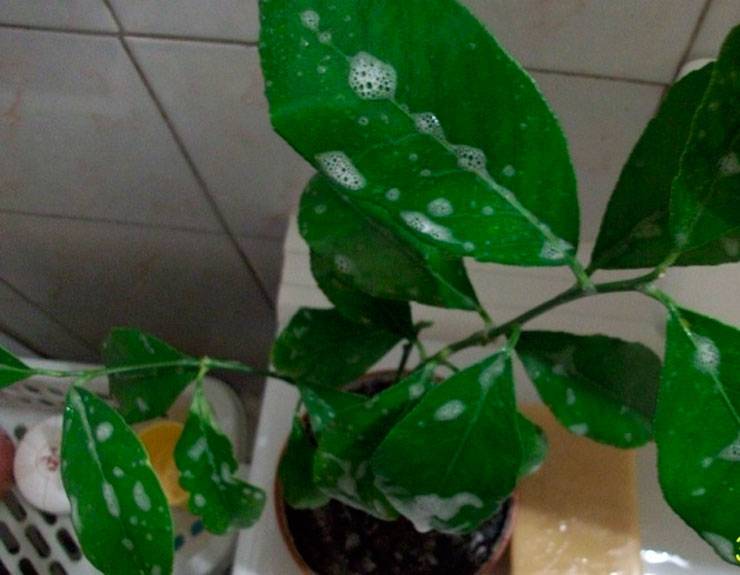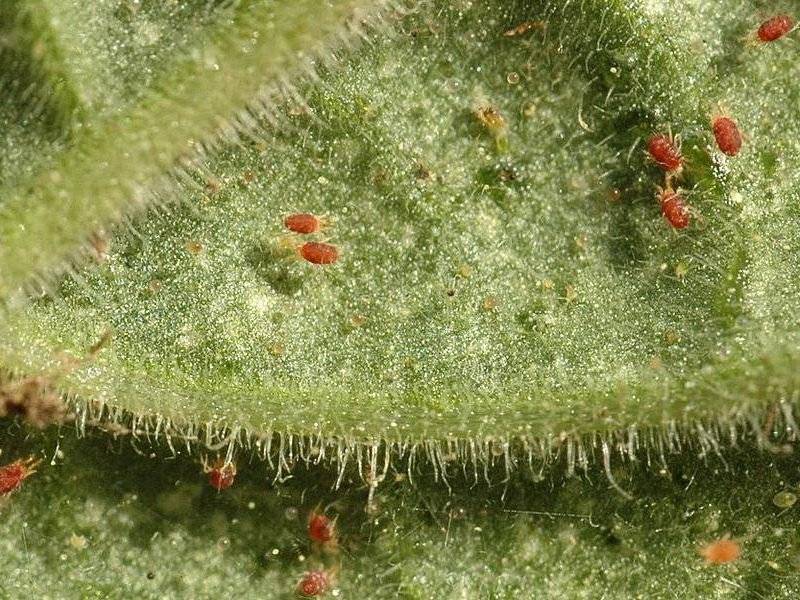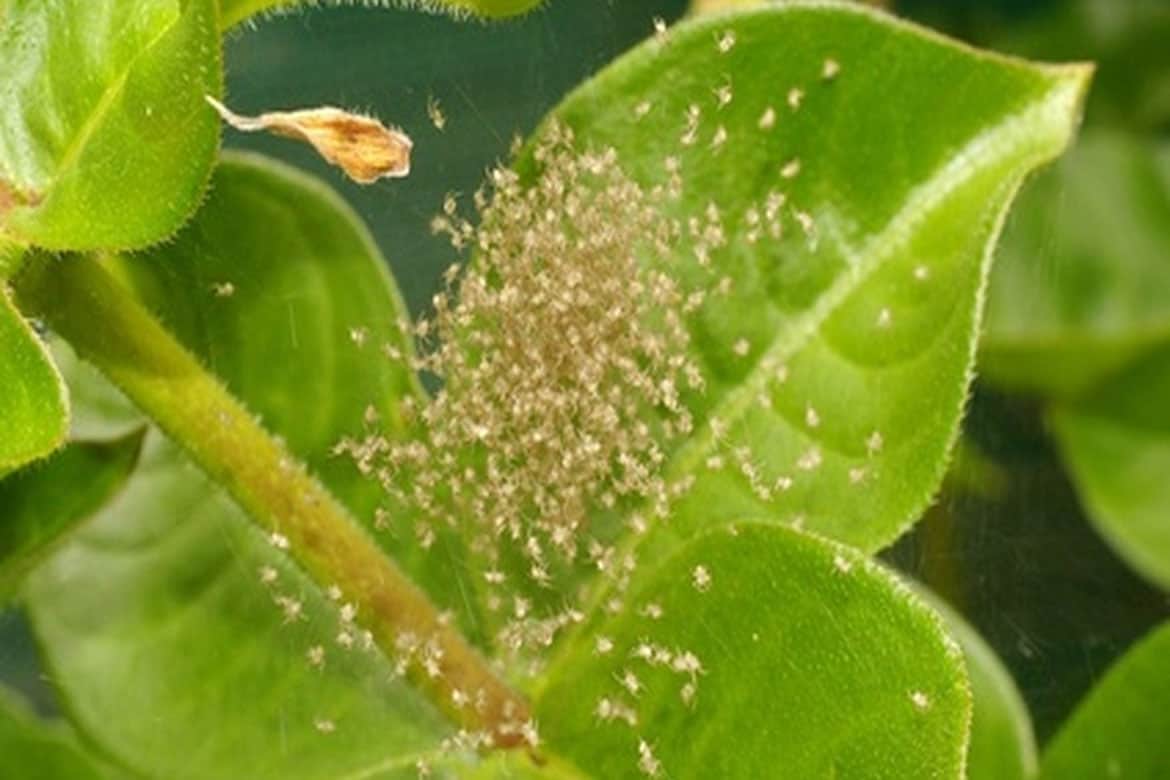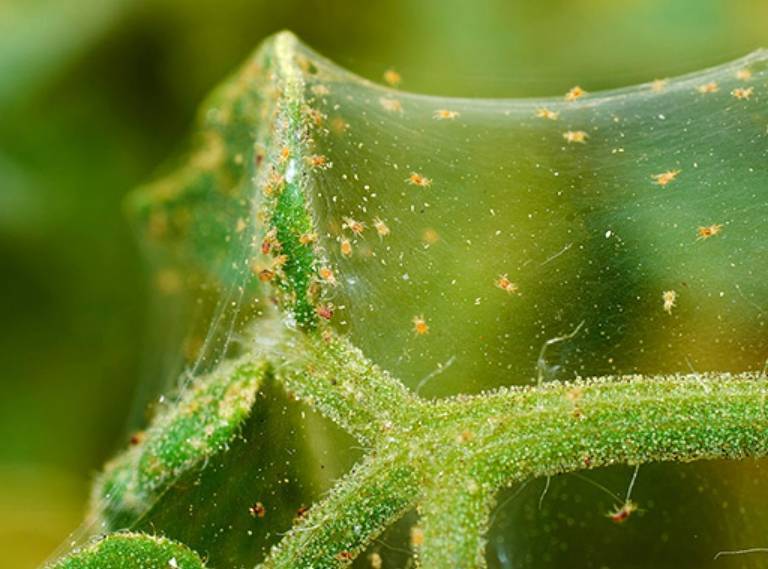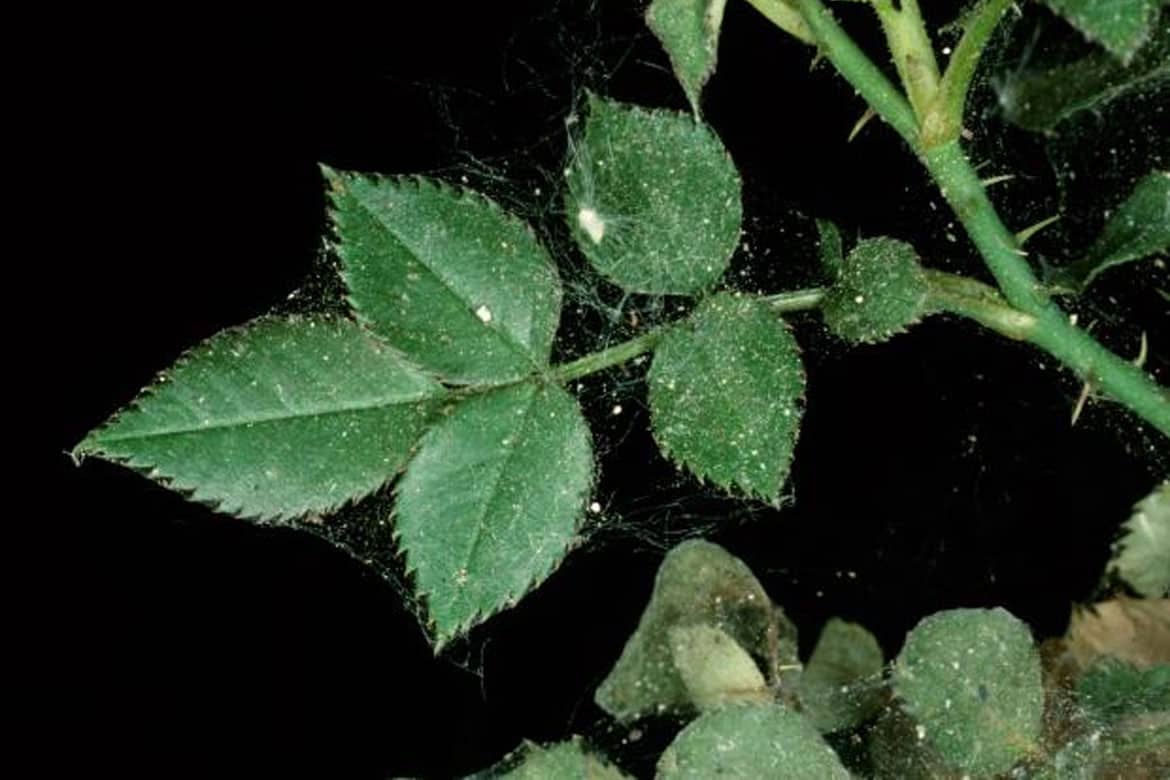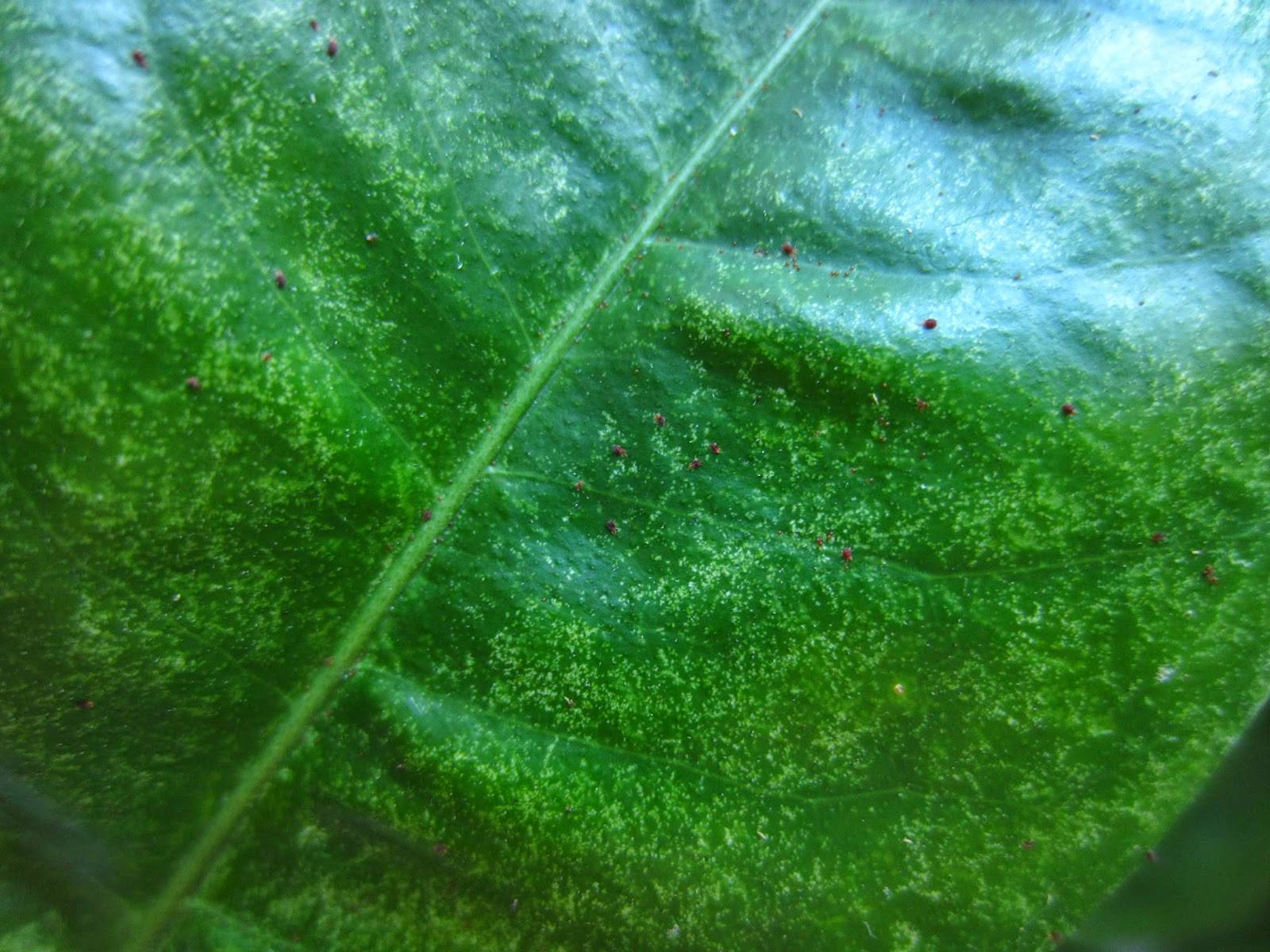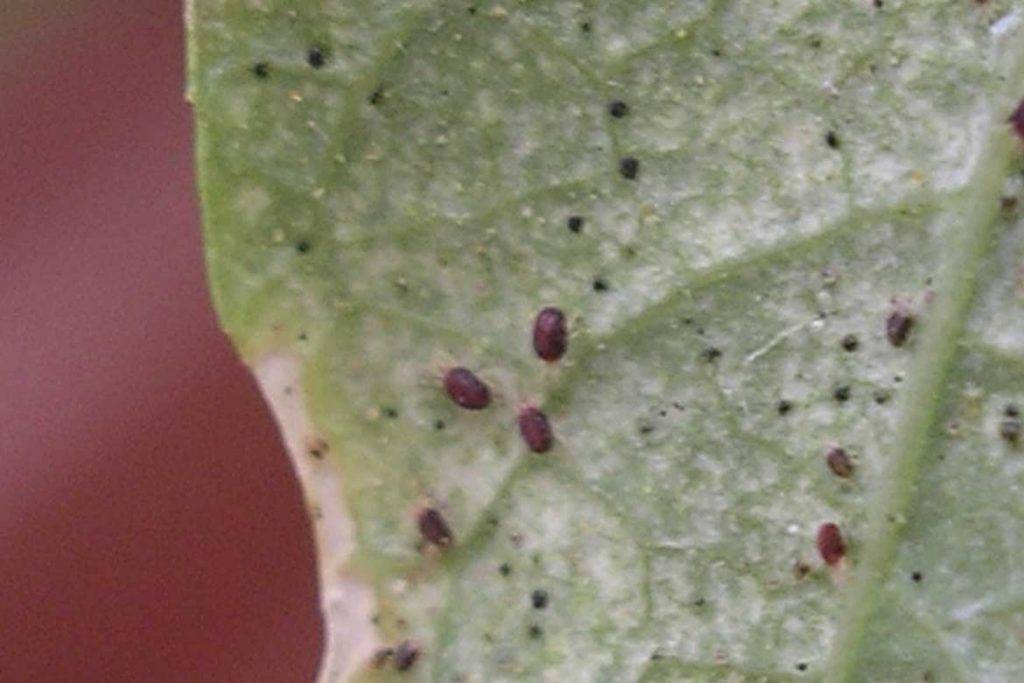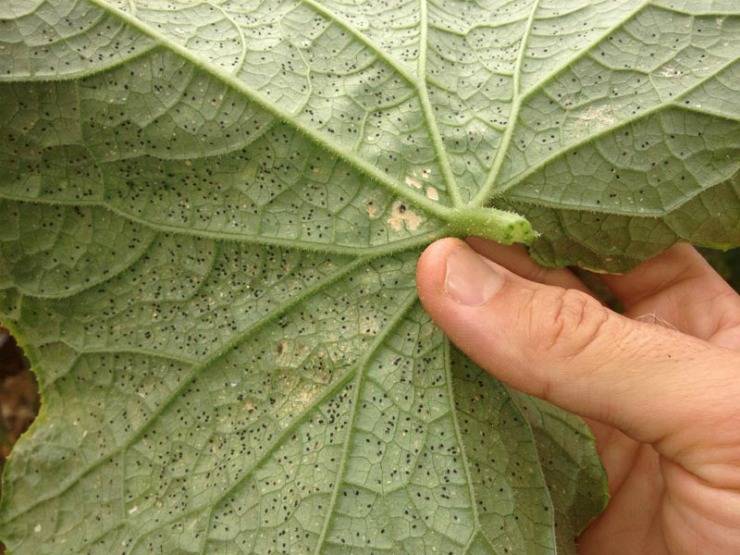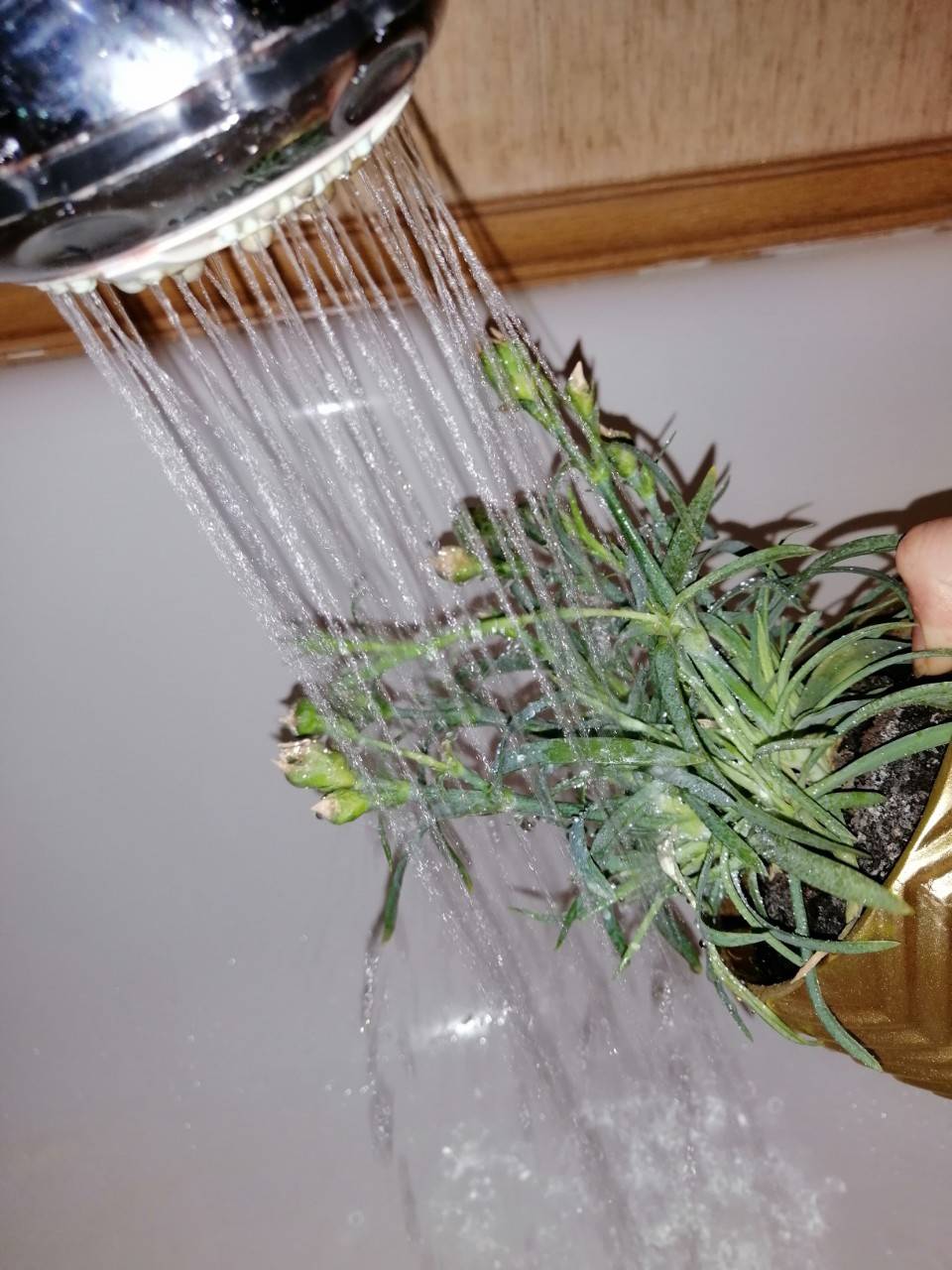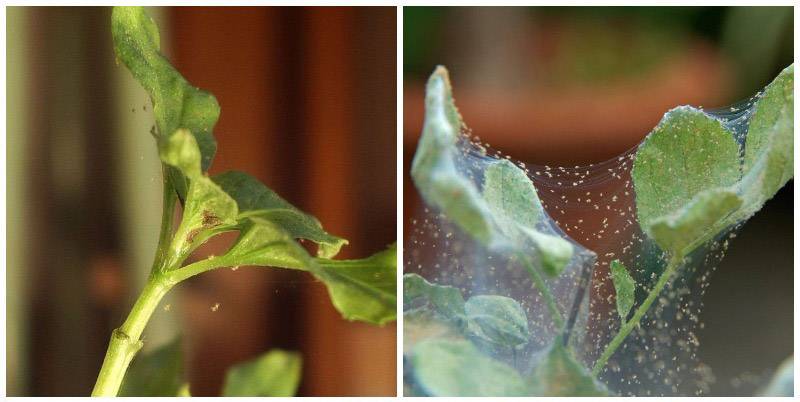How to detect?
They often hide in leaves or soil. If there are too many pests, then they will be quite noticeable. You should not look for individuals or their thin, barely noticeable cobweb, but the skins that they leave after molting. You can find them on the back of the foliage, which is a favorite place for these arthropods.
Outwardly, the skins resemble small dandruff scales and are grayish or white in color.
There are several clear signs by which you can determine that a green pet was attacked by a spider mite (control and prevention measures are described in the article):
- the appearance on the leaves of light or pale yellow spots;
- the presence of small scales on the seamy side of the sheet;
- thin cobweb on leaf plates.

If the flower is completely covered with cobwebs, then it can no longer be saved and it will soon dry up.
The best insecticides for pest
How to deal with a pest. Spider mites on indoor plants are destroyed by acaricides or insectoacaricides.
- Actellic is a non-systemic insectoacaricide. Works at any stage of growth. It is attributed to the second class of harmfulness, therefore it is recommended for use not in an apartment, but on the street.
-
"Karate" is an insectoacaricide. Suitable for use at any stage of insect life. 3 class of harm.
- Apollo is a hormonal agent. Not dangerous. Sterilizes adult insects, they stop multiplying and therefore the colony dies out.
- "Bitoxibacillin" is a biological preparation. Not harmful, has an intestinal effect, but only kills adult ticks.
- "Demitan" is a slightly toxic acaricide. It can be addictive and is often discouraged.
Interesting!
Spider mite insecticides are harmless. They will not help get rid of them, and will have no effect. Only insectoacaricides and acaricides are able to solve the problem with spider mites on flowers.
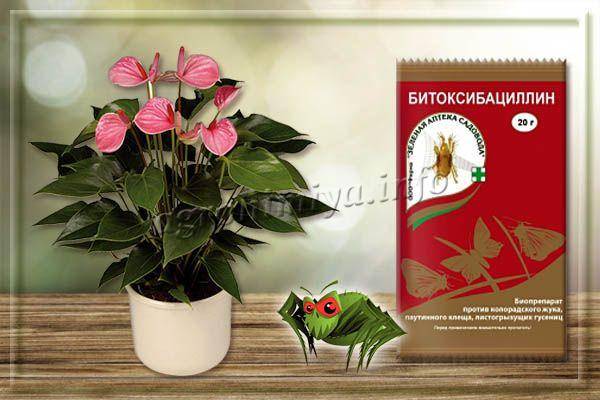
Bitoxibacillin - a biological preparation against spider mites on indoor plants
- Nissoran is a hormonal drug. It renders infertile adults and destroys the young, as a result, the number is sharply reduced, and the colony dies out.
- Sunmight is a moderately hazardous contact acaricide. Acts on individuals of different ages. The main disadvantage of the product is that pests quickly adapt to it.
- Flumite is a hormonal acaricide. It is used only once, because it is addictive. Acts on spider mites of any age.
Also, among the quality drugs that allow you to destroy ticks, it is worth mentioning: "Omayt", "Talstar", "Skelta", "Envidor".
Spider mite prevention
Spider mites can enter your home in two main ways: with a new plant or through a window. To significantly reduce the risk of a tick entering the house, it is necessary to keep any new plant bought in a store (even a checked one) separately for the first time until the absence of diseases and pests is confirmed.
Plants in a flower shop are often susceptible to attacks by various pests, so right after purchase it is important to cure a new pet before placing it next to the rest.
A pest can enter a window along with a stream of wind, especially in hot and dry weather. Of course, we cannot keep the windows permanently closed (stale air is no less destructive for plants than a spider mite), so we need to create the most uncomfortable conditions for the mite in the house itself:
Spider mites do not tolerate high humidity. Use a humidifier and damp mop regularly.If your plants are not for desert and dry conditions, spray them regularly
The mite, as a rule, lives on the underside of the leaf, so it is this that you need to pay attention to when spraying.
Wash plant leaves with soapy water once a week. This puts the tick to suck the juice out of them, and therefore the pest will quickly die of hunger.
Water-loving plants can be washed 1-2 times a week under a warm shower
Ficuses and ivy are especially well tolerated. Ticks that may be on their leaves will die from streams of warm water.
What to do with succulents? These indoor pets do not tolerate spraying, moisture on leaves and high humidity in general - how to protect them from spider mites? Fortunately, this pest does not threaten succulents. The fact is that succulents have fleshy leaves with a dense shell, which the tick simply cannot bite through.
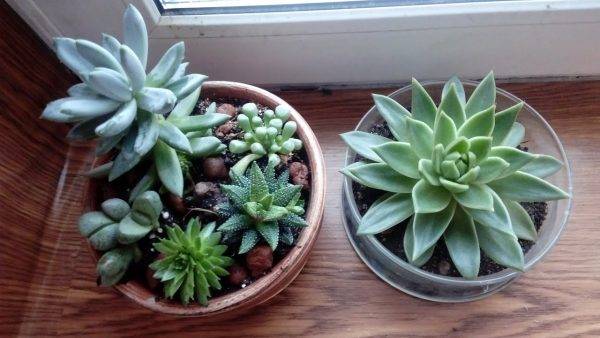
Succulents are beautiful and unpretentious indoor plants, which, in addition, are not threatened by spider mites.
Prevention of the appearance
The mite loves dry air and high air temperatures. In order not to give him pleasure, the flowers need to be often sprayed, and the apartment must be ventilated so that it is not too hot.

A hot shower every 3 weeks can be a good preventative measure. Many plants can easily tolerate temperatures up to 45 degrees.
Everything related to plants and brought into the house from the outside must undergo strict control and, if necessary, processing. The new flower is washed in the shower and placed on an empty windowsill, where it must undergo a two-week quarantine. Soil for plants needs steaming, like all other components used to make planting mixtures, including drainage.
The spider mite is a very dangerous and insidious enemy. He can quickly destroy the entire collection of indoor flowers. Therefore, you need to fight it mercilessly, only then you can defeat it.
Folk remedies for struggle
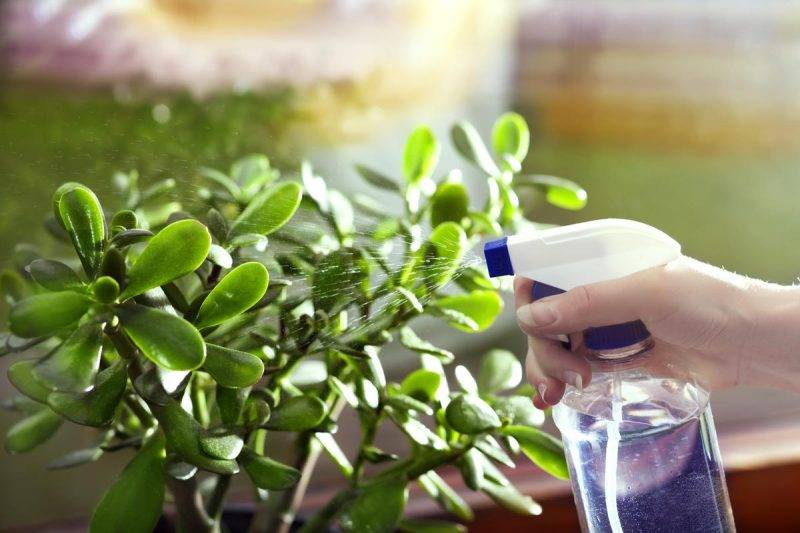
First of all, these are various decoctions and infusions.
In 1 liter of water, boil 100 dried alder leaves or 100 g fresh for half an hour. The broth infused for 12 hours is filtered and used for spraying.
Pour 50 g of leaves or 30 g of dandelion roots with hot (40 degrees) water and leave for about 3 hours, drain.
100 g of chopped horseradish roots are poured with a liter of water. Let it brew for an hour and filter.
20 g of garlic cloves are passed through a garlic press and mixed with 1 liter of water. Strain without insisting, and immediately process.
Finely chop a large onion, pour 0.5 liters of warm non-hard water, let it brew for 5 to 7 hours under a lid. Use a strained solution.
Gently rub the leaves with 965 strength rubbing alcohol
Particular attention should be paid to the processing of the leaf axils, where the mite can hide.
If you turn on a household UV lamp with medium-length rays for only 2-3 minutes, then the tick will be destroyed. This can be done 3-4 times a week.
Perhaps the use of a mixture of acetone and 96% alcohol in a 1: 2 ratio
It is better to simply dip the plants completely into this solution. Combine the processing process with a transplant, thoroughly clearing the roots from the old substrate.
Varieties of spider mites
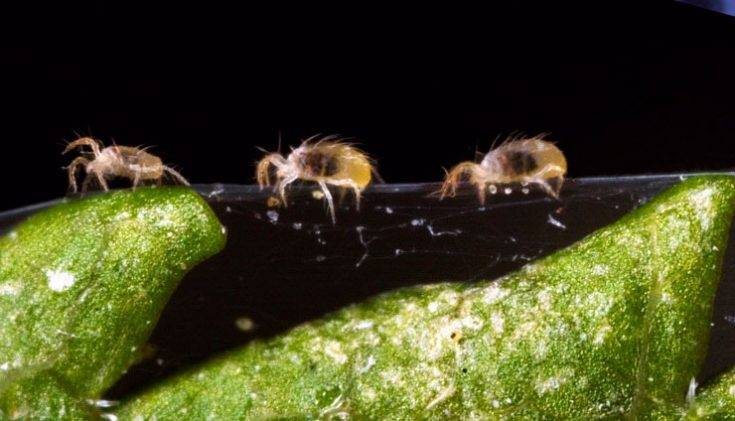
Each mite species prefers to feed on the sap of certain plants. Therefore, it is advisable to know which plants, which mites inhabit. For example:
- Red tick. Prefers flowers such as balsam, lemon, rose, orchid.
- A wide mite is found on ficus, oleander, some types of cactus, euonymus.
- Atlantic tick. Prefers to settle on palms and citrus fruits, as well as on other plants. High humidity lover.
- Cactus mite or briobia. As a rule, this parasite chooses exotic plants.
- Clover mite. Prefers bulbous plants, euonymus, orchids, ficus, peneomy.
- Cyclamen mite.Selects flowers such as pelargonium, balsam, violet, chrysanthemum, gloxinia.
- Common mite. It can be seen on rose, dracaena, balsam, fuchsia.
- False tick. A very small parasite that is difficult to recognize with the naked eye. Besides, he does not weave a web. As a rule, most of the flowers on which this dangerous parasite has settled dies.
Home ways to fight
Things you will need:
a magnifying glass (preferably thirtyfold), water, a plant spray, 4-5 tablespoons of dishwashing liquid, 1 glass of salicylic alcohol.
- Using a magnifying glass, carefully examine the indoor plants, check if they have been attacked by a spider mite. Hold the glass over the plant and check for brown or black spots, no larger than poppy seeds. Look around for gnawed shoots, leaves, stems, or other signs of pests.
- Spray the plants as often as possible and water regularly. Spider mites usually sink down if the plant is well sprayed with water. The water washes away the remnants of the cobweb net and all the debris, the vital activity of ticks. It will be good if you remove the plants in a room that is not too sunlit for the period of tick control.
Water and dishwashing liquid
If the number of mites on the plant is small, then rinsing the infected plant leaves with warm water and a few drops of dishwashing liquid will be quite effective against them.
Mix 1 tablespoon of liquid dish soap and 1 quart of water. Pour the solution into a spray bottle. Spray the plant under the leaves to kill the mites. The product kills pests as soon as it hits them. To stop further mite invasion, use the product after 7 days.

Dishwashing liquid can be sprayed on infected plants
Laundry soap and water solution
Treatment with a solution of soap and water helps fight ticks, and you can also sprinkle the leaves with the remains of ash from a burned cigarette.
In the event of an attack by a pest on a shrub hydrangea or a fragrant violet, cypress helps a shower from a strong pressure of water for several days.
Vegetable oil
The underside of the leaf blade can be greased with vegetable oil. The oil coats the body of the spider mite, creating a barrier and restricting air access, which will ultimately lead to suffocation of the pest.
Soap and denatured alcohol solution
Another effective way to combat spider mites is to treat the back of a plant leaf with a solution of laundry soap and denatured alcohol. To prepare the solution, you need 20 g of laundry soap and 10 ml of denatured alcohol to dissolve in 1 liter of water. Stir the mixture thoroughly and spray with a hand sprayer
It is very important to cover all parts of the plant with liquid. It's good if, after spraying, you can wrap the plant in a transparent film and let it stand for a few days.
The transparent film will show the dark remains of the spider mites. This will be a sign that the treatment was successful.

Denatured alcohol is the strongest poison for spider mites
Extract from garlic and onion peels
A good effect of killing spider mites is achieved by using an extract from a clove of garlic and onion peels. It is not only fatal to them, but also prevents them from re-invading the plant. The smell of garlic and onion acts as a deterrent to the colonization and spread of the spider on plants.
To prepare the extract, finely chop the cloves of garlic (about 25 g), pour them 1 liter of cold water and leave for 12-14 hours. After this time, the solution should be decanted, diluted with cold water in a 1: 1 ratio and sprayed onto the plant. The extract is consumed during the day because it quickly loses its healing and lethal properties.Plant treatments should be repeated 21 days later to make sure the pests have left your plants and are not returning.
Salicylic alcohol and water
Mix 1 cup of rubbing alcohol with 1 cup of water and pour the mixture into a spray bottle. Alcohol kills ticks on first contact. Water dilutes the alcohol enough not to harm the plant. Spray the underside of the leaves of plants especially where spider mites like to live.
Good to know!
In order to prevent the appearance of spider mites at home, which is especially important in winter, take care of additional humidity in the house - spray the plants with warm water more often.
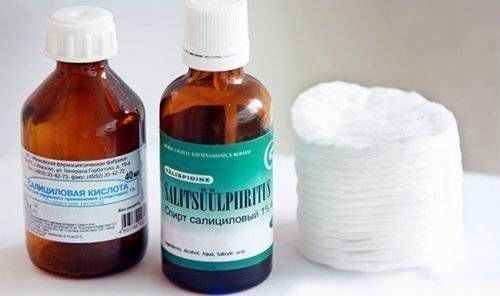
Salicylic alcohol needs to be treated with the back of the plant.
How to recognize a plant infestation
It is difficult to see a spider mite on indoor or garden plants, since it has very small sizes - from 0.2 to 1 mm. The only thing that can be noticed is cobweb in some places, as well as pinpoint damage to the leaves.
The web is almost transparent. It can be noticed by the remains of the vital activity of parasites, as well as settled dust, since it contains a sticky substance. It helps the ticks to stay in place during windy weather.

Insects, depending on the species, can have a transparent body, so it is almost impossible to see such. Some look like dust, which is why gardeners notice infestation in the later stages, when all plants - decorative or agricultural - are entangled in cobwebs.
On it, black dots are scattered with insect excrement. There you can also find eggs, however, you will have to use a magnifying glass to examine transparent small clutches of 3 - 5 pieces.
Spider mites settle on adult plants and young seedlings
When examining indoor crops, special attention should be paid to the back of the leaves, it is there that the pest likes to hide, as it avoids direct sunlight. It is also more convenient to eat from the inside - there the skin is softer and it is easier to bite through it
Parasite damage
The green color of the leaves is due to the presence of chlorophyll, which spider mites eat. To do this, they bite through a leaf with their proboscis and damage the chloroplasts, which contain chlorophyll. As a result, the sheet is covered with dots - these are puncture points. In this place, tissue death occurs and the place becomes discolored, then darkens.

The more pests, the stronger the damage to the leaf plate. In the future, the points merge with each other, the sheet dries gradually, and then falls off. As a result, the loss of foliage leads to the death of the plant due to the inability to feed and produce chlorophyll.
Spider mites are indiscriminate in food, so they can feed on any plants, even poisonous ones - bleached, wormwood and others. Small crops die in one season - berries, vegetables, flowers. Trees also suffer from the invasion of animals, but they can harm a tree in 2 - 3 seasons.
In addition to eating foliage, pests carry fungal spores and the process of destruction of crops is faster, since punctures in the tissues are the gateway for infection. Next season, in addition to insects, it will be necessary to fight mold and bacteriosis.
Spider mite control on indoor plants is a little easier, as there are fewer potential habitats than in the garden, but it still takes time and attention.
Preventive measures
Of course, preventing trouble is much cheaper than dealing with the consequences. Preventive measures against spider mites include:
- daily inspection of indoor flowers
- quarantine for new sprouts, seedlings with complete isolation from domestic plants
- regular ventilation of rooms and artificial air humidification
- systematic spraying of flowers
- periodic illumination of greenery with an ultraviolet lamp (once a week for 1 minute).
Remember! Ticks are resistant to aggressive external influences, but not immortal.The victory in the struggle will still be yours!
|
|
|
|
Tick treatment recommendations
Some growers are interested in how to deal with a spider mite, because most acaricides and folk remedies are powerless against them. However, systematic work on the destruction of the pest always gives good results if you follow certain rules during the treatment of bushes.
- Before processing, it is worth cutting off and burning all the most affected leaves. This will reduce the number of insects on the flower several times!
- A spider mite on indoor plants will not survive if you breed acaricides or insectoacaricides according to the instructions. But they are sprayed not only on affected domestic crops, but also on those that grow close to them. If this is not done, the pest will move to a safe flower, survive and multiply with the same effort, destroying indoor crops.
- First, the crops are sprayed with chemicals, and then the soil is moistened.
- Treatment with folk remedies is carried out more often than with acaricides. 3-4 sprays of the product are done 1-2 times a week. In this case, not only adults are destroyed, but also young ones.
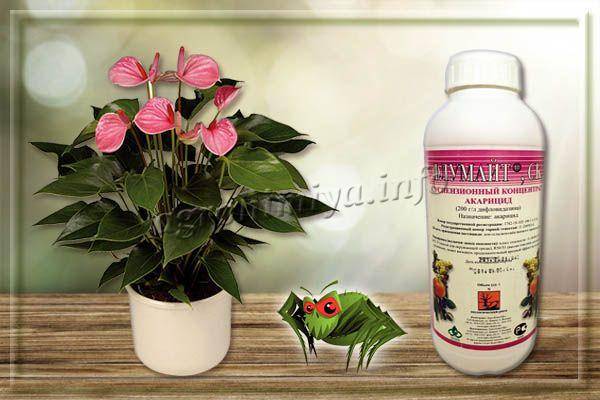
Flumite - hormonal acaricide against spider mites on indoor plants
Important!
Spider mites do not tolerate high humidity. So, as a preventive measure, you can arrange frequent spraying, watering
But such prevention is only suitable for those indoor crops for which an abundance of water is not dangerous.
After processing cultures with folk or specialized preparations, you need to carefully wipe the surfaces where the pot is with vodka. It is also advisable to wash the curtains if the plant is on a windowsill.
If insects on indoor crops are frequent guests, it is necessary to carry out prophylaxis at least once every half a month.
For prevention, you can arrange a shower for the plants, and wipe the leaves with soapy liquid and rinse.
If a shower is not recommended for the flowers, a steam bath is made - windows and doors are closed in the bathroom, boiling water is turned on and the plant is left for a quarter of an hour.
It is important to disinfect the pallets once a week. To do this, you can at least just wash them with dishwashing liquid or rinse with boiling water.
The pots are only disinfected when transplanting plants.
By following these simple guidelines, you can quickly kill spider mites on indoor plants.
The spider mite is a dangerous pest that can multiply quickly. It depletes the plants and causes them to die. But if it is discovered and destroyed in time, the cultures can be saved and they will quickly be restored.
Spider mite on indoor plants
This is the worst pest of indoor plants. If your favorite flower began to dry for no reason, then it is worth examining the reverse side of the leaves. If you find small dark dots on the lower surface of the sheet plate, poke one of them with a toothpick. If a speck of dust begins to move, then this is a spider mite, and it's time to wonder how to deal with it.
Where dwells
More often the pest settles on plants with delicate and juicy leaves: indoor roses, chrysanthemums, crotons, violets, Benjamin's ficus. Plants with rough leaves covered with cuticles - zamioculcas, ficuses, cacti - are too tough for the pest, since it cannot pierce the thick shell and get to the juice.
After mite infestation, the indoor flower turns yellow and dries. The pest can settle not only on the leaves, but also on the petals, disfiguring them. Inflorescences become wrinkled, spotty, fall off prematurely.
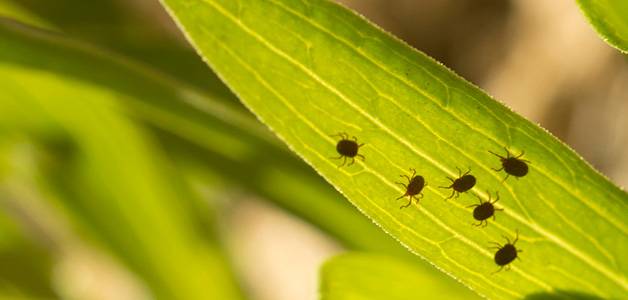
Pests multiply rapidly. Even a single specimen that got into a room with a stream of air from a window in a dry room air favorable for it will begin to multiply rapidly.From laying eggs to obtaining adults from them, it takes only a week.
Spider mites on indoor plants quickly move from pot to pot, infecting home plantings. Take a closer look at the areas of the stem from which the leaf petioles extend. If you notice a white cobweb, then this means that ticks have settled on indoor plants and it's time to get down to business.
Ready funds
The most effective remedies for ticks belong to the category of acaricides. In room conditions, the most harmless biological type agents are suitable. Acaricides destroy only adult insects and do not harm eggs, so the treatments have to be repeated several times every three to four days.
Fitoverm
The drug has an enteric action against harmful insects and ticks, produced in Russia. Contains soil fungus spores that settle inside the body of pests and cause their death. Safe for people and animals. For the treatment of indoor plants, 2 ml of Fitoverma is diluted in a liter of water and the leaves are sprayed every 7 days. The treatments are repeated 2 to 4 times.
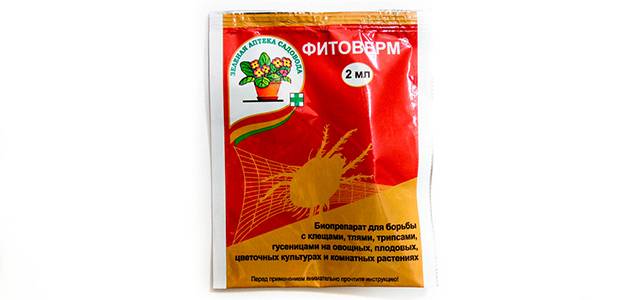
Vermitic
Manufactured by Syngenta, Switzerland. Biological preparation for the protection of ornamental plants in open and protected ground. At the beginning of the appearance of mites, one treatment is sufficient. If the driver has managed to multiply strongly, the treatment is repeated after a week.
To kill insects, 3 ml of the drug is diluted in 10 liters of water. After spraying, a plastic bag is put on the plant, which can be removed after a day.
Aktofit
Ukrainian analog Fitoverma, a biological preparation of 4 generations, destroying ticks and insects. Indoor plants are treated twice with an interval of at least 14 days. A liter of water requires 4 ml of the product.
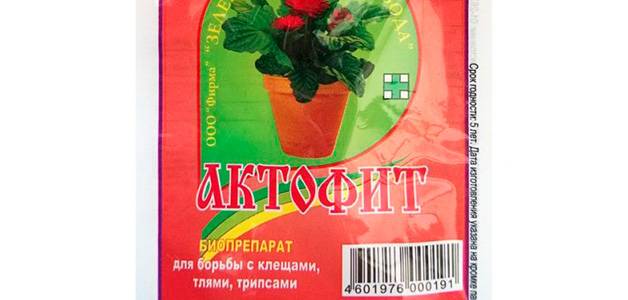
Folk remedies
If the number of pests is small, then one of the proven home methods can be dispensed with.
Medical alcohol treatment
The most difficult thing is to find real medical alcohol with a strength of 96%. Soak a cotton swab in alcohol and wipe the leaves of the flower - all ticks and eggs will be instantly destroyed. This measure of combating spider mites is suitable for plants with dense leaves: ficuses, Chinese roses, dieffenbachia, palms, and is not suitable for thin, delicate and pubescent fuchsia and violet leaves.
Laundry soap
It does not destroy ticks by itself, but creates a film on the surface of the leaves through which the pests cannot breathe and die. The soap is whipped into a lather and brush all the leaves with a brush. After three to four hours, the plants are washed under a warm shower and covered overnight with a plastic bag. The increased humidity will "finish off" the miraculously survived, but already weakened pests. If a plant with small leaves is infected, a sprayer can be used instead of wiping.

Cat flea drops
Drops from cat fleas quickly and reliably destroy spider mites on domestic plants. Add 3-4 drops of the product per liter of water and carry out 2 treatments with an interval of 10 days.
Spider mite in the garden
In the garden, mites appear in June and already in August go to winter, hiding under plant debris and in the surface layer of the soil. During this time, they manage to destroy a huge number of garden plants. In greenhouses, PCs can live all year round without retirement.
Where dwells
More often, spider mites start on seedlings in a greenhouse. Floral and decorative leafy crops of open ground suffer greatly: garden roses, chrysanthemums, boxwood, juniper, robinia, chestnuts, mock-orange. Starts up quickly on lemon.
With great prey, the insect settles on greenhouse cucumbers, eggplants and tomatoes. Grapes, apple trees, strawberries, melons, beans, beets, rhubarb, soy, spinach, peppers are not bypassed.
The pest settles on the lower plane of the leaf and sucks out the juice. It can be detected by the cobweb accumulated at the base of the petioles, but it becomes visible when the infection becomes massive.
The first signs of damage are a general lightening of the leaf blade and the formation of whitish small spots on it, located without a certain order, chaotically. At the next stage, the reverse side of the leaf is tightened with the thinnest layer of cobweb, under the canopy of which the tick can move freely.
Ready funds
Finding a PC in a vegetable garden is not easy due to its small size. The gardener sounds the alarm when the plants turn yellow and the leaves fly around. In a short time, one skeleton can remain from a lush bush.
Neoron
An effective remedy for any herbivorous mites, available in 25 ml ampoules. It acts in a contact way - the tick that touches the leaf begins to hurt and eventually dies. Plants are sprayed in calm weather. Dissolve from 10 to 20 ml of Neoron on a bucket of water (depending on the population with pests).
Omite
Acaricide based on propargite, kills thrips as a bonus. It penetrates into the body of the tick only by contact. Pests die after a few minutes. Omite is available in powder and emulsion, diluted according to the instructions on the package.
Fufanon (Anti-tick)
The active ingredient is malathion. 10 ml of Fufanon is dissolved in 10 liters of cool water - this volume is enough to process one hundred square meters. The product is toxic to mites and insects, including bees. Moderately hazardous to humans and animals.
Folk remedies
Popular methods of struggle are of little help. In order not to lose crops or home flowers, it is better to combine home recipes with chemical or biological treatments.
Decoctions
Decoctions and infusions of essential oil plants can help: garlic, onions, horseradish. A kilogram of finely chopped raw materials are poured with a bucket of cold water. After a few hours, the liquid is filtered and sprayed.
Field horsetail
A common plant found in many vegetable gardens - field horsetail - contains a huge amount of silicic acid, which makes the leaves of flowers and vegetables tasteless for the tick, and at the same time increases the resistance to powdery mildew and rust. A kilogram of field horsetail is infused in 10 liters of cold water and simmered for half an hour over low heat under a lid, then filtered - and the broth is ready for spraying. Before processing, the liquid is diluted five times with water.
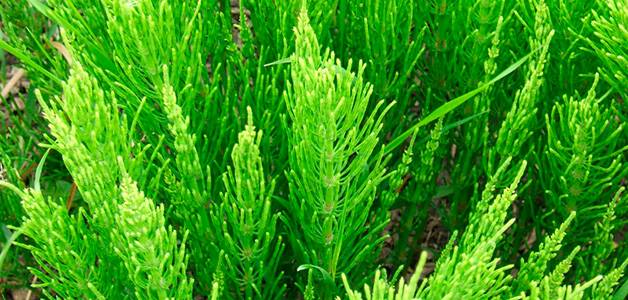
Using folk remedies, you need to know that pests get used to them as well as to insecticides, so decoctions and infusions need to be alternated. For better adhesion, you can add a little laundry soap to any prepared liquid - 2 g per 1 liter.
What does a spider mite look like on indoor plants and how to detect the presence of a pest?
Nonspecific primary manifestations of a tick complicate its detection. The following symptoms indicate a defeat by a pest:
- Brown specks form on the leaves, as if from punctures with a thin needle.
- The foliage dries up, the flowers fall off.
- The growth and development of culture slows down.
- Red or black dots on the back of the paper that move.
- The cobweb that braids the flower and the back of the leaves.
- Individuals congregate on the cobweb if the population is large.

Infection symptoms
The main sign of the presence of mites is the formation of a thin web on the lower part of the leaf or between the leaf blade and the stem. You can simply remove the fragile cobweb with your hands. The movement of parasites on its surface is noticed immediately.
Signs of shedding, reminiscent of dandruff, are considered clear signs of the presence of a pest. In addition, spider mites leave white spots and silver streaks on the foliage.
Types of parasites, how they are dangerous
Biologists classify the tick as an arachnid arthropod type. This classification is possible due to the special structure of his body. That is why all insecticides used against other insects against ticks are powerless. They need other means. In nature, there are more than 2,000 different species of mites. They can be found all over the world.
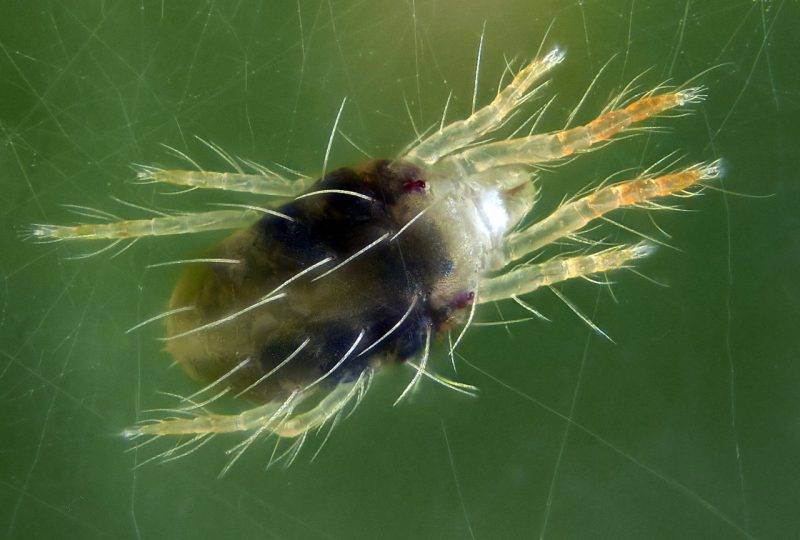
For indoor plants, the following species are the most dangerous:
- common spider mite is absolutely omnivorous, affects up to 200 plant species;
- red spider mite - specializes in indoor plants and is most dangerous for them;
- red-footed spider mite;
- Turkestan cotton spider mite.
The community of these microscopic arthropods is not fully understood, so other species may be discovered.
The main food of any representative from the above list is plant sap. The indoor flowers deprived of it quickly weaken and die. What is the danger of spider mites?
They are hard to find
The size of an adult, regardless of the species, is no more than 1 mm, and the color is greenish-brown in different shades, which makes it easy to merge with the foliage. Only wintering females are brightly colored. The mite lives on the seamy side of the leaves, so its colony is not striking.
They multiply rapidly

A tick's breeding cycle, called metamorphosis, can last from a month to a week, depending on the ambient temperature. At a temperature of about 30 degrees Celsius, the larvae emerge from the eggs after 3 days, and after a few days they are ready to reproduce. Therefore, the colony of ticks grows very quickly, capturing new territories.
Ease of infection
The pest can be brought into the house with purchased plants or other planting material, with soil, on the soles of shoes and on clothes. Finally, a tick can enter a room through an open window, blown in by the wind, and the number of storeys does not matter here.
Diapause in females
If the conditions for development and nutrition become unfavorable, the females of ticks fall into a kind of dormant stage, in which they can stay for up to 5 years. But more often they just settle for the winter - daylight hours shorter than 17 hours do not give them the opportunity to lead an active lifestyle. Mites overwinter on leaves or in pot soil. They are able to bury themselves to a depth of 20 cm. Any gap is suitable for them - in the windowsill, wall, ceiling, or in the floor. Females do the same during prolonged heat.
Such features of the life cycle make the fight against the pest difficult and time-consuming.
Tick types and danger
Such small pests settle on domestic plants in accordance with their taste preferences. Some hate aloe, others hate plants of the Gesneriaceae family, etc.
The number of tick species exceeds several thousand, the most common of which are:
- Common or white mites - light spiders, the most dangerous and common, live on the back of leaves and young shoots. With strong reproduction, they are able to crawl to neighboring plants. The first sign of their appearance on a flower: yellow spots and the thinnest cobweb that entangles green shoots and leaves.
- Red mites are microscopic brightly colored insects that infect indoor orchids, roses, lemon trees; are among the most dangerous and rare.
- Cactus flat or briobia - strike exotic plantings, leaving yellow dotted stripes on the greenery, the eggs are orange, and the clutch is located in a chain along the leaf veins.
- False mites are the smallest even among their fellows, which is why they imperceptibly damage plants that are covered with cobwebs and quickly wither.
- Cyclamenaceae - settle in the soil, in tubers and on the leaves of plants, outwardly their colonies look like dust, which makes detection difficult.

